
Est 1992 M L MODERN HEALTH AND LIVING JANUARY 2023 - FREE PUBLICATION H A GUIDE TO HEALTHY LIVING FOR MEN, WOMEN, CHILDREN AND SENIORS ULTIMATE HEALTH GUIDE FEATURE Wellness always be present. Acupuncture | Body Health Bone | Chiropractic | Dental Fitness | Hearing | Lupus Migraines | Nutrition | Pain Physical Therapy Skin | Sleep Vision | Weight Loss Yoga SENIOR LIVING Healthy Aging Retirement Living Staying Active Memory Care & Much More Employment Opportunities
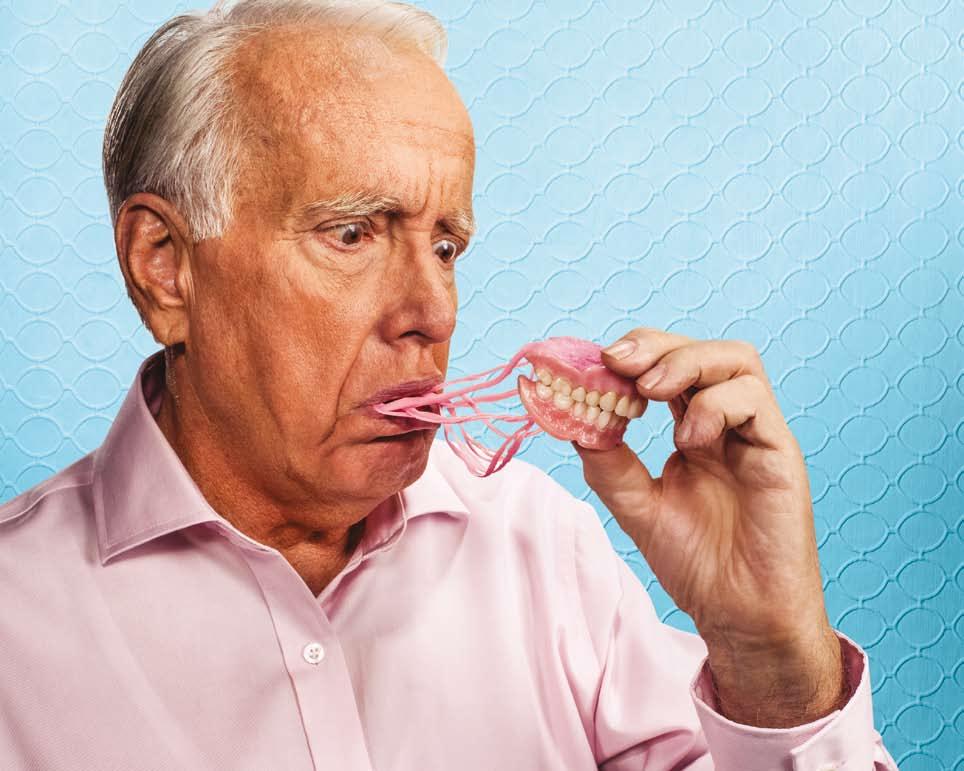










more information, please visit teethinplace.com
Comprehensive Treatment Options exclusively feature the LOCATOR ® Attachment and other products from ZEST Anchors LLC. Call today for a consultation. Never worry about your loose dentures again. Stop trying to hold your dentures in place with messy adhesives. InPlace™ will allow you to secure your teeth and say “goodbye” to adhesives forever. Visit our dental practice and discover how life-changing and affordable implant-retained overdentures can be. TIRED OF THE GOOEY MESS? There IS a better option. 1469 S. 70th St | West Allis, WI 53214 (414) 383-5833 wisconsinsmiles.com
For
InPlace
The concept of mindfulness is simple. This ancient practice is about being completely aware of what’s happening in the present—of all that’s going on inside and all that’s happening around you. It means not living your life on “autopilot.” Becoming a more mindful person requires commitment and practice. A new year comes and we all start to think about how to make this year better for us. As soon as this idea passes through our conciousness, it can also just as quickly fade with every passing day. Maybe we should take the pressure off and give ourselves more time for a bigger plan.



“If we miss the opportunity to live from our real self during the first half, we are given another chance in the middle of our life.” This quote is from Dr. Kumar with an amazing uplifting article in this month’s edition.
Re-read the quote everyday if you need to. Get inspired. There is so much left for us always to find within ourselves.




Welcome to the Wellness edition. Packed with articles and inspiration to jump off this January with a healthier more mindful life.


Inspiration can come from anywhere. Keep your eyes open so you don’t miss a beat this month. My son raced Grindfest at the Petitt in December and was pleasantly suprised to be one of the only high schoolers to compete against an Olympian. A simple race with a person with the same interest of long distance running, gave him another reason to push harder, eat healthier and yes get more rest to recover.
I want this year for all of us to strive and rest, rest and strive. Push ourselves to be better in anyway that will help us stop, relax and appreciated that self work needs to be done and will always be rewarded. Happy New Year Everyone!
Amanda Lewis

publishers editor graphic
advertising disclaimer Lewis Media Group | www.modernhealthandliving.com thanks contributers contact staff MHL STAFF images distribution manager travel editor founder
The Ommani Center, Livestrong.com, Environmental Nutrition, Nutrition Action Health Letter, Columbia/St. Mary’s, Ascension, Eye Care Specialists, Aurora, Alexian, Eye Physician Associates, Brothers Village, Ye Olde Pharmacy, NIH, Jensen Health and Energy, Foot Solutions, Allergy and Asthma Centers, Tudor Oaks, Active Care Rehab, Greensquare Center for the Healing Arts, Midwest Audiology, Integrative Family Wellness Center, Universal Services, American Camp Association, Home Instead, Manor Care, Tops, Dr Zhou, Captel and MCFI For information on advertising or to submit articles call, 414-659-6705 or 608-237-6000, or email mhl@wi.rr.com. Subscriptions are $20 per year. Thanks for reading MHL. MHL is published on the first of each month . The articles in this publication are in no way intended to replace the knowledge or diagnosis of your doctor. We advise seeing a physician whenever a health problem arises requiring an expert’s care. Special Thanks! To all the local professionals that provide us with articles containing new information and keeping all our readers informed of the latest in healthy living. Lewis Media Group Amanda Lewis Malberry Media Tom Delgado Barry Lewis
design
Jerry Kornowski Marlys Metzger Barry Lewis 123RF.com, Istock.com
Editors Note
January 2023 EDITION Est 1992 M L MODERN HEALTH AND LIVING JANUARY 2023- FREEPUBLICATION H AGUIDETOHEALTHYLIVINGFORMEN,WOMEN,CHILDRENANDSENIORS ULTIMATEHEALTHGUIDE FEATURE Wellness alwaysbepresent Acupuncture | Allergy&Asthma BodyHealth | Chiropractic Dental | FitnessFootHealth | Hearing Nutrition | Pain PhysicalTherapy Skin | Sleep Vision Yoga SENIORLIVING RetHealthyAging irementLivingStayingActive MemoryCare & Much More Employment Opportunities
January 2023 MHL 3 MERCURY-FREE FLU SHOTS ARE NOW AVAILABLE! Mercury is a known neurotoxin which attacks and damages nerve cells The body DOES NOT ELIMINATE mercury- it accumulates forming a tight bond with oxalate The amount of mercury in a traditional flu shot is 25mcg - above the EPA’s limit of what is considered hazardous waste Adults & Children 6 years and older. Stop in today!!!! visti us on the web at: www.yeolderx.com keep the flu away Freewith most insurance plans
-Stay Healthy








January 2023 MHL � We are looking for strategic thinkers, team players and leaders who align with our purpose of improving the health and wellbeing of those we serve Join our team of holistic health practitioners Our work focuses on crea ng meaningful connec ons with each of our clients, helping them to move to ward a healthier lifestyle. We assist each individual’s journey by helping to uncover root causes of their health concerns through holis c natural health and wellness advocacy If our purpose resonates with you, we invite you to explore career opportuni es and apply today. *Full me or part me (at least three days a week as client load builds). $35/hr, up to $40hr maximum. Qualifica ons: Must have a passion for natural health. Background in Nutri on preferred Willing to train the right candidate MENOMONEE FALLS AND NEW BERLIN WHO UNDERSTAND THAT HEALTH IS PERSONAL SEE WEBSITE TOTALHEALTHINC.COM FOR MORE INFORMATION CLINIC@TOTALHEALTHINC.COM Send re sume to:
Holistic is a form of soothing that considers the unexpurgated person – form, mind, spirit, and emotions in the mission for optimal health and wellness.
Eco-friendly Green Dentistry: The Future Of Dentistry?
By S. G. Damle

Holistic dentistry also called the natural dentistry, unconventional dentistry, progressive dentistry, or biocompatible dentistry is the same discipline of harmonizing and is a progressive branch of medicine and dentistry. Holistic dentistry emphasized insolences to dental care and said to consider the importance of oral and dental health in the milieu of the patient’s perfect somatic as well as demonstrative or transcendent health. Although the holistic dental fraternity is diverse in its practices and approaches, the common threads include strong opposition to the use of traditional materials such as amalgam in dental fillings, nonsurgical approaches to gum disease, and the belief that the root canals may endanger systemic health of the patient through the spread of entombed microorganisms into the body. Numerous dental professionals who use these terms also regard the fluoride use in prevention unfavorably.
Holistic is a form of soothing that considers the unexpurgated person – form, mind, spirit, and emotions in the mission for optimal health and wellness. According


to the holistic medicine assertiveness, one can achieve finest health. The primary goal of holistic linctus practice is to gain suitable balance in life. A holistic consultant may use all forms of health care, from conventional medication to various therapies, to treat a patient. For example, when a person suffering from migraine headaches pays a visit to a holistic doctor, instead of walking out solely with medications, the doctor generally take a look at all the potential factors that may be causing the person’s headaches such as other health problems, diet, sleep habits, stress, personal problems, and preferred unequalled practices. The treatment plan may or may not only involve drugs to relieve symptoms but also the introduction to lifestyle modifications to help prevent the problems from wonted.
Many detect and express sentiments specially the unconventional dentists who criticized the technique as not being evidence-based by the mainstream dental community and skeptics of alternative medicine. Generally speaking, the holistic dental complex defines the field as: “An approach to Dentistry that promotes health and wellness instead of the treatment of disease.” This approach to dentistry encompasses both modern science and knowledge drawn from the world’s great ethnicities on natural healing. Holistic dentistry acknowledges and deals with the mind, body, and spirit of the patient, not just his or her “teeth” and lays out with the basic principles - proper nourishment for the preclusion and reversal of deteriorating dental disease, avoidance and elimination of toxins from dental materials, prevention and treatment of dental malocclusion, and prevention and treatment of gum disease at its biological basis. Some of these modalities were very new and others were very old, but the thing that they shared in common was the system which offered additional options for treatment. A shift from the early emphasis of the dentist on modalities to the consideration of attitudes and feelings of the patient. Practitioners of holistic or biological dentistry can vary a great transaction in terms of the techniques and services they offer, and there is merit to different approaches to dentistry.
However, controversy and debate has arisen over the years regarding the use of alternative health practices in holistic dentistry, as critics claim that many of these practices involve prevention, diagnosis, and treatment outside the scope of dentists. Dentistry, like medicine, is grounded in thorough scientific research. A significant part of the critique of holistic dentistry is related to the unsubstantiated use of certain services and treatments, many of which have either been investigated and found ineffective or have not been researched enough to be declared safe and effective for practice. For example, herbal remedies are often recommended in the form of mouthwash and toothpaste to prevent or treat certain dental conditions. They are supposedly safer products because they are “natural.” However, there is a lack of scientific research
� MHL January 2023
dental
green>>page
2�
5 Tips for Making Fitness Resolutions That

Fredericksburg Fitness Studio, a private personal training studio, helps people get healthy all year
With the New Year upon us, it’s time that millions of people will be making resolutions. According to a large-scale study published in the December 2020 issue of the journal PLoS One, some things can help people be more successful with their resolutions. The more people know about what it takes to be successful with them, the more likely they will ensure they are doing those things and will come out with the results they were after.
“The key to making fitness resolutions that will last all year is to make SMART goals. SMART stands for specific, measurable, attainable, relevant, and time-based,”
The PLoS One research followed nearly 1,100 people from the general public who had set resolutions. Some of the people had support, while others didn’t. When they followed up with the people a year later, they found that 55% considered themselves successful in sticking with the resolution they had set. Researchers found that the most common resolutions involved physical health, weight loss, and eating habits. They concluded that New Year’s resolutions could have a lasting effect, approach-oriented goals are more likely successful than avoidance ones, and those who have support are significantly more successful with their resolutions.
Here are 5 tips for making your fitness resolutions last all year:
1) Make SMART goals. Put some specifics to your goal to help keep you accountable. Make sure your goal is specific, measurable, attainable, relevant, and timebased.
2) Have an accountability buddy. Whether it’s a friend, a family member, or a coworker, tell someone your goal or see if anyone has the same goals as you. If you are working on your plan with someone else, you’re more likely to stick to it, and it can even be fun.

3) Put check-ins on your calendar. When planning your yearly calendar, add checkins every month or every quarter to remind yourself of your goal and keep yourself honest throughout the year. If you’ve made specific goals, add monthly checkpoints that you want to achieve each month to get to your larger goal by the end of the year.
4) Be consistently good. We are human, and we aren’t perfect. Knowing that we may slip up sometimes is okay, but planning for that is great. Focusing on being consistently good with your goal rather than occasionally great can help you mentally with your goals. Would you operate at 80% all year long or have one month at 100%, 2 months at 50%, 1 month at 25%, and another month at 100%? Being consistent across the board will help you reach your goals faster, even when you slip up occasionally.
5) Commit yourself. If your goal is fitness or health-related, try going to a personal trainer that will help hold you accountable and help you reach your goals. Having a standing appointment weekly with someone will keep your goals at the forefront of your brain and help you not put them on the back burner all year long.
“You can be one of the successful people sticking with their resolutions,” added Scherer. “It’s a matter of sticking with the things that work. Trust me, you will be so happy that you did!”
January 2023 MHL �
REQUIREMENTS: Hearing Loss, High Speed Internet, Dial-tone. No-Cost Phone with valid third-party certification is subject to change without notice. Terms and conditions may apply. FEDERAL LAW PROHIBITS ANYONE BUT REGISTERED USERS WITH HEARING LOSS FROM USING INTERNET PROTOCOL (IP) CAPTIONED TELEPHONES WITH THE CAPTIONS TURNED ON. IP Captioned Telephone Service may use a live operator. The operator generates captions of what the other party to the call says. These captions are then sent to your phone. There is a cost for each minute of captions generated, paid from a federally administered fund. No cost is passed on to the CapTel user for using the service. CapTel captioning service is intended exclusively for individuals with hearing loss. CapTel® is a registered trademark of Ultratec, Inc. The Bluetooth® word mark and logos are registered trademarks owned by Bluetooth SIG, Inc. and any use of such marks by Ultratec, Inc. is under license. (v1.6 10-19). Can’t Hear on the Phone? Get a CapTel Captioned Telephone at No-Cost to you! The CapTel® Captioned Telephone shows word-for-word captions of everything a caller says, letting you read anything you cannot hear over the phone. CapTel is a NO-COST, federally funded technology available under the Americans with Disabilities Act. To qualify, users need: • Hearing loss • Internet connection • Landline telephone service CapTel 2400i includes Bluetooth® wireless technology & Speakerphone 800-233-9130 CapTel.com
explains Jennifer Scherer, medical exercise specialist, certified personal trainer, and owner of Fredericksburg Fitness Studio. “Many times, goals are toobroad or vague to have any chance of lasting the whole year.”
fitness
Will Last All Year
The key to making fitness resolutions that will last all year is to make SMART goals.
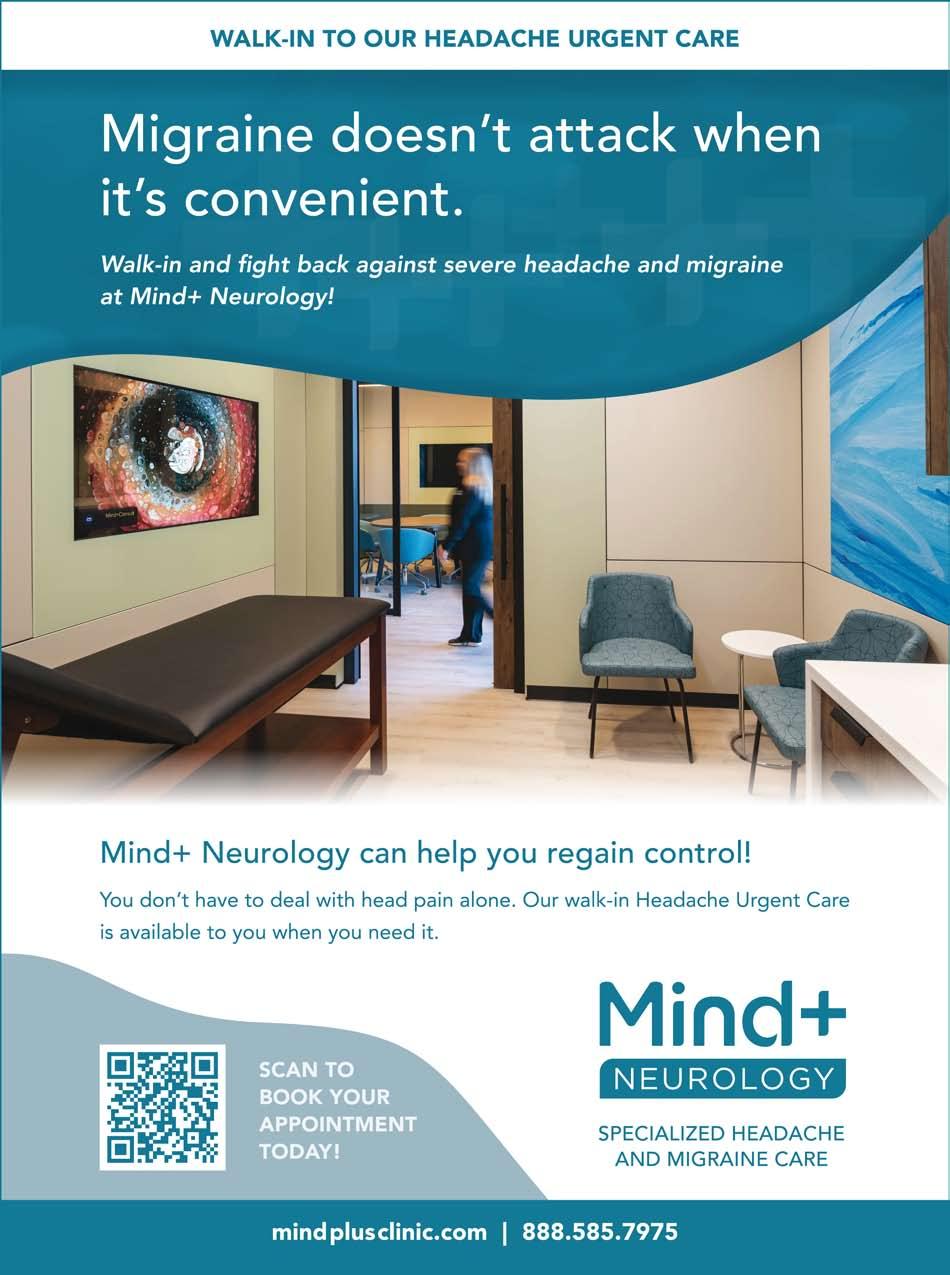 By Sarah Arndt
By Sarah Arndt
At age 34 while on a tropical beach vacation in Mexico, my life as I knew it changed forever.

One minute I was laughing with friends enjoying dinner and the next felt like I was on a tugboat in the middle of the ocean rocking back and forth, crashing against the hard waves. Little did I know I’d spend the next 2.5 years of my life in extreme pain and dizziness isolated to my bed in the dark away from the lights, sounds, and smells of the outside world.
Migraine is the second most disabling disease on the planet and the first most disabling disease among young women (1). If you live with migraine, you already know how incredibly disruptive this condition can be to your life and if you quite fortunately do not, it’s extremely likely you know someone whose life it is disrupting as this condition affects an astounding 1 in 10 people globally (2).
What is migraine? Let’s be clear in that migraine is not your typical New Year’s Day hangover headache. Migraine is a complex neurological disease of the brain accompanied by dozens of debilitating, full-body symptoms including moderate to severe pulsating, throbbing, or pounding head pain; nausea/vomiting; dizziness/vertigo; light/sound/smell sensitivity; visual disturbances called aura like flashes of light, shapes, blind spots, and even loss of vision; slurred or garbled speech; stiff neck; ear ringing; anxiety and panic; and dozens more. These symptoms can last a few hours to a few days and for some weeks, months or even years.
After waiting nine long months to see a migraine specialist only to be exclusively offered pharmaceutical-based options left me feeling frustrated. I knew more had to be done.
Taking only one approach to health offers limited effects. If you desire to suc-



cessfully live well with migraine or any chronic health condition in the New Year, approaching wellness from multiple angles is key.
Live Intentionally
Living with intention means saying yes to things that align with the betterment of yourself and no to things that don’t. We live in a world where we’re always expected to say yes; it’s unsustainable and a recipe for burnout and dis-ease. Try starting each day visualizing how you want the day to unfold and begin to eliminate habits you become aware of that are no longer serving you.
Take Control of Your Diet
The Standard American Diet (SAD) is comprised of highly processed, highly palatable, nutrient deficient, inflammatory foods. Opting for whole foods such as pasture-raised animal-based products like grass-fed beef, pasture-raised chicken and eggs, and ideally organic fruits and vegetables are foundational for overall health and well-being. As you’ve probably heard many times before, we quite literally are what we eat.
Detox Your Environment
Many conventional home and beauty products are contaminated with harmful endocrine-disrupting chemicals that even at very low doses have implications on our hormonal health (3). Swapping out your current arsenal of products for cleaner options, switching from plastic to glass food-storage containers, and filtering your air and drinking water all can help support your body’s healthy production of hormones.
Spend Time in Nature
Modern-day society has us more disconnected from nature than ever before. The average American spends 93% of their life inside (4) and vitamin D deficiencies are on the rise globally. Avoiding sun exposure is a risk factor for all-cause mortality and while supplementing with vitamin D is a great secondary option, we should ideally be getting our vitamin D from the sunlight. Science has shown that spending 120 minutes or more outdoors each week is associated with improved health and wellbeing (5).
Sarah Arndt is a Certified Health Coach and Director of Lifestyle Wellness at Mind+ Neurology. To learn more about Mind+ visit mindplusclinic.com or call 888585-7975.
Mind+ Neurology, a specialized headache and migraine clinic, offers walk-in Urgent Care for immediate rescue from severe migraine attacks. The newly built clinic is located at 12200 Corporate Parkway, Suite 400, Mequon, WI 53092. As an independent practice, no referral is needed. Mind+ Neurology is accepting new patients. Go to mindplusclinic.com to schedule an appointment today!

January 2023 MHL �
Year migraines migraine>>page 4� Migraine is the second most disabling disease on the planet ...
Living Well with Migraine in the New
DHS Approved 8/16/2021 My Choice Wisconsin provides government-funded programs to frail seniors, adults with disabilities, individuals, and families. We care for the whole person and well-being of all by offering services that promote independence, value diversity, and inspire self-advocacy. www.mychoicewi.org/MHL 800-963-0035 TTY 711 For Long-Term Care options contact your local Aging and Disability Resource Center. www.dhs.wisconsin.gov/adrc/
Caring starts here.

Eye MDs Review Top 10 Reasons to Take Care of Your Eyes


Start the New Year Right by Investing in Your Sight
By Cheryl L. Dejewski
Often, people are hesitant to make an appointment to have their eyes checked—even when they know they have a problem. That’s when friends and relatives can play a vital role. You may recognize that someone’s failing vision is preventing them from enjoying hobbies or performing daily tasks. By arming that person with information and support, you can help them to avoid isolation, injuries, depression and even blindness. To help you help others (or even yourself) to see life to the fullest, we asked the doctors at Eye Care Specialists, one of Wisconsin’s leading ophthalmology practices, to provide an overview of some of the top reasons not to delay taking care of your eyes. You may find the following points motivating for scheduling an eye appointment in the New Year.


1. “Improving vision can have a substantial impact on task performance and quality of life. Researchers in one study found that even with just modest visual improvement (as achieved with new eyeglass prescriptions), participants could read, write, use the telephone, watch TV, and play cards better. They also reported less psychological distress (such as worry and frustration). And, new glasses increased social interaction in terms of visiting friends and participating in group activities,” notes Brett Rhode,
MD, senior partner at Eye Care Specialists and Head of Ophthalmology at Aurora Sinai Medical Center.

2. Taking good care of your eyes may actually boost your attitude. For example, one study found that removing a cloudy cataract and improving vision can also increase the amount of light and color which enters the eye, thus positively impacting cortisol, melatonin and mood levels.
3. Just about everyone can benefit from improved vision. “Within our own practice, we have long believed in the importance of providing the best possible vision to all patients—even those mislabeled too old, depressed, confused or cognitively impaired to benefit. Family members, caregivers, and patients themselves often report positive changes in demeanor and ability to communicate following cataract removal,” says Daniel Ferguson, MD, an eye care specialist with thousands of cases under his surgical cap. “In fact, a study presented at an Alzheimer’s Association International Conference demonstrated that both dementia patients and their caregivers benefit when a patient’s vision is improved. Most notably, patients who needed and underwent cataract surgery were more mobile, functioned better, and demonstrated slower memory decline than those who needed cataract

January 2023 MHL 11 Vision>>page 4�
vision
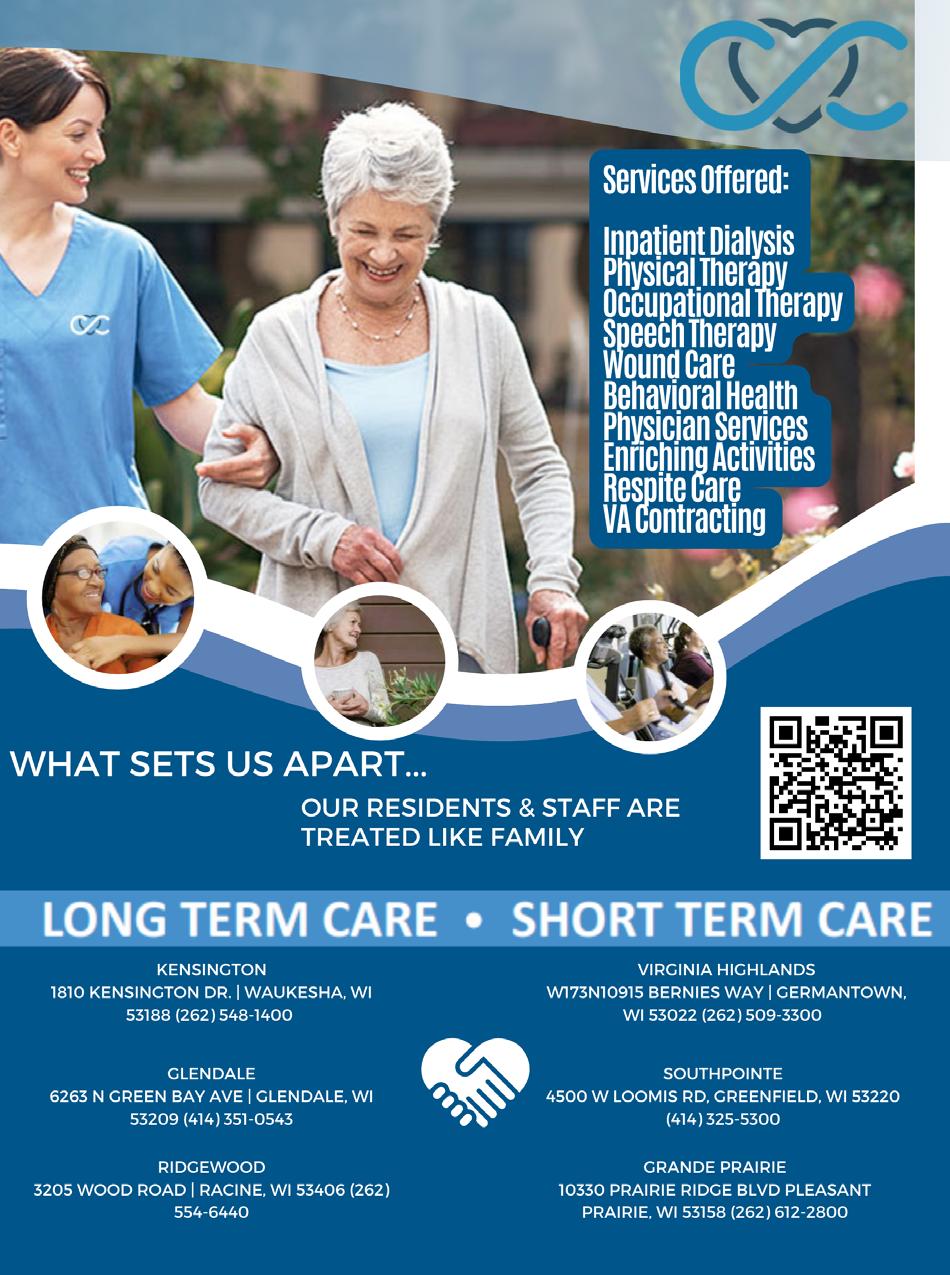
subtle and come and go in the early stages. This means that symptoms may not be noticed or taken seriously by family and friends
Some signs that there may be problems:
*Forgetting names of family and important events (especially if recent)




*Frequent falling
Risk of Bone Loss Increases With Age
*Staring
*Losing empathy, being insensitive to the feelings of others
*Word problems; not finding the right word, replacing nouns with “it”, “that thing”, “stuff”, etc.
*Problems with organizing and planning


*Obsessive, ritualistic behaviors
*Uncharacteristic behaviors: being sad all the time, rude, anxious, loss of interest in previous hobbies, activities, or friends
*Easily frustrated, blames others
*Money and number problems
*Illness, medication interactions or depression are some conditions that mimic symptoms of dementia. Only a doctor can diagnosis if it is dementia or another condition. Having a full medical workup can treat a medical condition or determine if it is dementia.
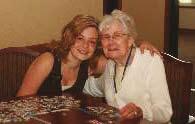
WHAT KINDS OF TREATMENTS ARE AVAILABLE FOR COGNITIVE DECLINE?
There is currently no cure for dementia but there are non-drug and drug treatments which can help with slowing the symptoms of dementia.
Bone health is something few aging adults worry about, but they should. Women in particular. Unfortunately, after menopause, women’s bones are extremely vulnerable to bone loss, and their risk of developing the disease increases with age. The loss of bone density not only results in frailty, but it increases the chances of serious breaks and fractures.
Brain stimulation can help slow the progression, especially early in the disease. Engaging in activities that are creative or make a person think such as word games, matching, or learning new information are valuable as long as the person doesn’t get frustrated because it is too difficult for them.
Socialization is important to remain engaged. Isolation can be decreased with visits from family and friends, attending events, going to senior centers, or connecting with others through Facebook or Skype.
While this certainly is a critical health issue for women in the years leading up to menopause and afterwards, at Home Instead Senior Care we firmly believe in keeping bones healthy at any age, for both men and women. Here are some of the best tips we know to help prevent or slow down bone density loss:

Exercising 30 minutes a day 5 times a week, eating a healthy diet, and managing chronic diseases such as diabetes or high blood pressure can help slow the progression.
Decrease stress with familiar routines and environments. Stress doesn’t cause dementia, but can worsen the symptoms.
· Get Your Calcium: According to the National Institute of Health, women over age 50 should consume 1,200 mg daily. Men between the ages of 51 and 70 should consume 1,000 mg a day, and men over 70 should consume 1,200 mg per day. This can be done by eating calcium-rich foods such as low-fat dairy products; orange juice, cereals, and other foods fortified with calcium; dark green, leafy vegetables like broccoli and collard greens; sardines and salmon with bones; soybeans, and nuts, and taking calcium supplements.
Medication may help improve mental function, mood, or behavior. For some, the drugs donepezil (Aricept), tacrine (Cognex), rivastigmine (Exelon), and galantamine (Razadyne) are helpful to delay some of the symptoms of mild to moderate dementia. Memantine (Namenda), may be prescribed for treatment of moderate to severe Alzheimer’s Disease. Antidepressants, antianxiety, and antipsychotics may be prescribed to treat depression, excessive anxiety, or hallucinations.
· And Your Vitamin D: Vitamin D helps the body absorb calcium, but many people, especially seniors, don’t get enough exposure to sunlight to fill their Vitamin D requirement. Also, as we grow older, our need for vitamin D increases. People ages 51 to 70 should consume at least 600 international units (IU) of vitamin D daily. People over age 70 should consume at least 800 IUs daily. Help the sunshine do its job by consuming foods like herring, sardines, salmon, tuna, liver, eggs, and fortified milk and foods. Also, talk to your doctor about how much D you should be getting (it’s possible to get too much) and whether you should take a supplement.
· Enjoy Physical Activities: Even just 30 minutes of physical activity a day can help keep your bones strong. Making time now for exercise, whether it’s walking, dancing, stair climbing, gardening, or yoga could prevent fractures and breaks later.
Take a Bone Density Test: Women over age 65 and all men over 70 should have an annual bone density test, which assesses bone health and the risk of fractures. Medicare and many private insurers cover this safe, painless test for eligible people.

· Talk to Your Doctor about Medications: If you’re concerned about bone loss, your doctor may be able to prescribe something to slow it down, improve density and lessen the risk of fractures.
For more information about the well-being of seniors and those who care for them, please contact Home Instead Senior Care at 414-8825464.


MARCH 2017 MHL 27
Call f or det
If you own a small business and c an’t af ford adver t ising, we have a solu t ion f or you. We are looking f or people to deliver MHL to 10-15 places once a month in exchange f or adver t ising space in this paper. It takes approximat ely 1-2 hour s to make these drop of fs and we will selec t the dis tr ibu t ion point s to be in your area. January 2023 MHL 13 bone health
ails. 414-659-6705




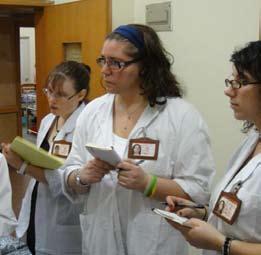





the Well Being Dr. William Dunbar, President of Midwest College Earn an accredited Master’s Degree in Oriental Medicine wth a Bachelor’s in Nutrition or a Master’s Certification in Acupuncture. Online, Evening and Weekend Classes Available “An Ancient Medicine For Modern Times” 6232 Bankers Road 6232 Bankers Road, Racine, Wisconsin 53403 | 8950 Gross Point Road, Skokie Illinois 60077 Approved by the Illinois Board of Higher Education and the Wisconsin Educational Approval Program. Accredited by the Accreditation Commission for Acupuncture and Oriental Medicine. Become an Acupuncturist in 2 1/2 years *Financial aide available for those who qualify Lifestyle the spirit never ages. 14 MHL January 2023
�0% of people with lupus are women
Can I Prevent Lupus?

One of the more shocking facts about lupus is that, according to the Lupus Foundation of America, it takes an average of six years from the initial reporting of symptoms to receiving an official diagnosis. For those battling lupus, however, that fact is just one of the many frustrating, mysterious aspects of their disease.
Lupus is a chronic, incurable autoimmune disease in which a person’s immune system attacks their own healthy cells. Scientists still do not know what exactly causes it, why women are the primary sufferers – 90% of people with lupus are women – or why women of color are two to four times more likely to develop it. Even more mysterious are the symptoms, which flare (periodically increase in frequency or severity), mimic those of other diseases, and can change over time. Additionally, lupus symptoms are not the same for everyone; a common saying among those familiar with the disease is “everyone’s lupus is different.”
Given these facts, how can an individual identify early signs of lupus, or take steps to prevent it? While the answer may be complicated, the more informed one is about lupus, the better equipped they will be to navigate the diagnostic process and reduce that average time to get answers about what is happening to their bodies.


Because the cause of lupus is unknown – and is likely an aggregate of factors – there is no specific thing one can do to prevent it. While lupus does tend to run in families, it also “jumps around,” so having relatives or parents with lupus does not mean that it will manifest in the next generation. The best thing a person can do is be aware of lupus in their families, and be familiar with its signs and symptoms.
Unfortunately, many symptoms of lupus mimic those of other diseases, and few are externally visible. Common symptoms of lupus include chronic pain, chronic fatigue, joint pain, mental
confusion, and rashes. One specific rash, called a malar rash, appears on an individual’s face spreading over their cheeks in a shape reminiscent of a butterfly. For this reason and because butterflies are a symbol of hope, the butterfly has been embraced as a symbol of lupus.
Because lupus symptoms flare, it is important for both diagnosis and treatment that anyone experiencing them creates a record of their type, frequency, and severity. The best thing for someone experiencing the above symptoms to do is keep a wellness journal. This can take any form, whether it be notes on a phone, a folder of papers, or a traditional journal. Get in the habit of writing down every day how one is feeling, any specific symptoms, any major changes to diet, exercise, or medications, and take photos of any physical symptoms like rashes or swelling. Before the next doctor appointment, review this journal so that the physician can be made aware of symptoms, even if they have passed. Physically seeing rashes, lesions, or other visual symptoms can also help a physician determine their possible cause.
If the physician suspects the cause of symptoms may be lupus – or some other autoimmune issue – they will likely perform some or all of the following tests (according to www.lupus.org):
• Blood tests
• Urine tests

• Antibody tests (the most common being the “ANA test,” which tests for antibodies to the body’s own tissue. This test will let the physician know to look for autoimmune or other similar causes)
• Blood clotting time tests
• Tissue biopsies
These tests help physicians assess potential causes of symptoms, and their results help rheumatologists and other specialists accurately diagnose their patients. While the diagnosis of a chronic disease can be difficult to accept, having that answer will help the patient’s healthcare team determine the most effective
protecti incur supplement and Their $150 Advantage save nearly for the product so working insurance and they best term would her similar she representative, care suggestions to remain mail of do situation, current and
January 2023 MHL 1�
lupus
including financial your
Call (262) 523-1440 today. Call (262)844-4752 today. lups>>page 4�
Sherry Baggerley
Vitamin D Deficiency & Skin Problems

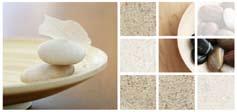

Vitamin D is vital to the health, beauty and longevity of the largest organ in your body:
By Gord Kerr Medically Reviewed by Jill Corleone, RDN, LD

Nobody is immune to the occasional pimple
A deficiency in vitamin D may contribute to skin conditions, such as acne and dermatitis, and delayed healing of wounds.
Vitamin D is vital to the health, beauty and longevity of the largest organ in your body: your skin. An adequate level of vitamin D benefits skin by helping to promote healthy epidermal cell growth, decrease the risk of infection, prevent skin aging and reduce the incidence of chronic disease, including skin cancer.
Why You Need Vitamin D
Vitamin D provides a wide range of functions essential for a healthy body and skin. Your skin relies on vitamin D for its anti-inflammatory properties needed to help eliminate bacteria or pathogens that permeate your epidermis.


In addition to being vital for your bones, vitamin D positively influences the health of your skin by its role in the regulation of hormones, synthesis of connective tissue and support of your immune system to neutralize free radicals that contribute to harmful skin conditions.
How Much You Need
Nearly, 30 to 50 percent of all age groups are vitamin D deficient worldwide. It’s crucial to get the right amount of vitamin D by way of adequate sun exposure, foods rich in vitamin D, fortified foods or supplements.
The recommended daily intakes for vitamin D vary among some organizations in the U.S.:
The Food and Nutrition Board recommends 600 IU for children and adults and 800 IU for seniors.
The Endocrine Society recommends 600 to 1,000 IU for children and 1,500 to 2,000 IU for adults.



The Vitamin D Council recommends 1,000 IU per 25 pounds of body weight for children and 5,000 IU for adults.
Vitamin D is known as the sunshine vitamin because your body can produce it when exposed to sun. The sun is the most abundant source of vitamin D for most people.
The effect of sun exposure on vitamin D synthesis depends on many factors, such as your skin pigmentation, body size, age and environmental factors, such as geographic latitude, season, time of day, weather conditions, amount of air pollution and surface reflection, which can all interfere with the amount of UVB radiation reaching the skin
To avoid vitamin D deficiency skin symptoms, you can get adequate amounts from the sun in as little as 15 minutes if you are very fair skinned or several hours or more for a dark skinned person. The Vitamin D Council says your body can produce 10,000 to 25,000 IU of vitamin D in about half the time it takes for your skin to begin to burn.
Although some natural foods contain vitamin D in small amounts, many countries fortify foods with vitamin D to make it easier to get sufficient amounts needed for good health. Some foods and fortified foods that contain vitamin D include:
Fatty fish
Egg yolks
Beef liver
Fortified milk, yogurt and orange juice
Fortified cereal and health bars
Infant formula
Vitamin D is also available in supplement form, and included in many multivitamins. When choosing a supplement, consider vitamin D3 as it is metabolized better than other forms of vitamin D, ac
1� MHL January 2023 skin>>page 44
healthy skin
Healthy Lifestyles & Weight Loss
New research shows that healthy eating patterns with different percentages of fat, protein, and carbohydrates can all promote weight loss
With new diets coming out every other day, it can be confusing to know the right healthy choices to make. The good news is that many diets are healthy and many can work. New research shows that healthy eating patterns with different percentages of fat, protein, and carbohydrates can all promote weight loss when the right amounts of calories are consumed. Research also shows that peanuts and peanut butter can be a part of all these diets.
In a review of more than 600 studies assessing how dietary factors are associated with coronary heart disease, certain diets and individual foods notably popped out as key players in reducing the risk of coronary heart disease. Of these, the Mediter-


ranean diet, the “prudent” diet, and a high-quality diet were considered beneficial.
The Mediterranean diet emphasizes a higher intake of vegetables, legumes, fruits, nuts, whole grains, cheese or yogurt, fish, and monounsaturated fat relative to saturated fat. The “prudent” diet is characterized by a high intake of vegetables, fruit, legumes, whole grains, and fish and other seafood. A high-quality diet provides more nutrient density. Peanuts, known to the culinary world as a nut but classified as a legume because of the way they grow, fit in all of these diets.
In addition, both monounsaturated fat, high levels of which are in peanuts, and nuts themselves, also showed a strong association with a lower risk of heart disease. Visit the links below to learn more about how to make healthier dietary choices including peanuts. Also check out the eating recommendations to learn how peanuts can be a healthy part of your lifestyle.
Healthy Lifestyles & Weight Loss
There are many ways to lead a healthy lifestyle and lose weight, but research shows many diets have peanuts in common!
DASH Diet
Dietary Approaches to Stop Hypertension (DASH) is an eating plan that emphasizes whole foods like fruits, vegetables, nuts and peanuts, and grains.
Hypertension, or high blood pressure, is a global public health concern. It is often referred to as the “silent killer” because its symptoms are not always evident. In America, hypertension affects one out of every four people, or 25% of the population. In the United Kingdom, the rate of hypertension is 23%.
In a clinical study supported by the National Heart, Lung and Blood Institute, scientists found for the first time that elevated blood pressure can be reduced with an eating plan low in saturated fat, total fat and cholesterol, rich in fruits, vegetables, grains, peanuts and nuts, and plentiful in magnesium, potassium, and calcium, as well as protein and fiber.
A significant finding in another study was the short amount of time it took to see results. Subjects who followed the DASH diet for just two weeks saw their blood pressures drop. Furthermore, the reduction in blood pressure stayed for as long as they stayed with the DASH diet.
In 2012, the DASH diet was ranked “Best Overall Diet” by U.S. News “for its nutritional completeness, safety, ability to prevent or control diabetes, and role in supporting heart health.” The DASH diet also topped the list for the “Best Diabetes Diet” and the “Best Diet for Eating Healthy.”
OmniHeart Diet
more comfort in every bite more comfort in every bite
At Outpost we’ve made dinner easier and as delicious as always. From our ready-to-cook meat options to premade selections that you just heat and eat... check out how we’ve taken comfort food to the next level!
4 stores in Metro Milwaukee 24/7 online shopping www.outpost.coop

January 2023 MHL 1�
nutrition
lifestyle>>page 4�
Yoga, Massage, Acupuncture, &


Lower Back Pain Relief
For patients with chronic low-back pain, recent evidence-based clinical practice guidelines from the American College of Physicians (ACP) gave a strong recommendation based on moderate-quality evidence that clinicians and patients should initially select nonpharmacologic treatment with exercise, multidisciplinary rehabilitation, acupuncture, or mindfulness-based stress reduction. The guidelines also strongly recommend, based on low-quality evidence, tai chi, yoga, motor control exercise, progressive relaxation, biofeedback, low-level laser therapy, operant therapy, cognitive behavioral therapy, or spinal manipulation.
What Does the Research Show?
Spinal manipulation. 2017 clinical practice guidelines issued by ACP strongly recommended spinal manipulation, based on low-quality evidence, as initial treatment for patients with chronic low-back pain. A systematic review supporting the 2017 clinical practice guidelines evaluated 32 randomized controlled trials involving more than 6,000 participants and found modest, short-term effects on pain. A 2010 Agency for Healthcare Research and Quality (AHRQ) systematic review concluded that spinal manipulation was more effective than placebo and as effective as medication in reducing low-back pain intensity. The researchers did not find consistent differences when they compared spinal manipulation with massage or physical therapy.
A 2011 Cochrane review of 26 clinical trials looked at the effectiveness of different treatments, including spinal manipulation, for chronic low-back pain. The authors concluded that spinal manipulation is as effective as other interventions for reducing pain and improving function. A 2018 pragmatic randomized controlled trial conducted in Europe involving 328 participants with recurrent and persistent low-back pain found that chiropractic maintenance care was more effective than symptom-guided treatment in reducing the total number of days over 52 weeks with bothersome nonspecific low-back pain, but it resulted in a higher number of treatments.
Acupuncture. 2017 clinical practice guidelines issued by ACP strongly recommended acupuncture, based on moderate-quality evidence, as initial treatment for patients with chronic low-back pain. A systematic review supporting the 2017 clinical practice guidelines evaluated 32 randomized controlled trials involving 5,931 participants and found that acupuncture was associated with lower pain intensity and better function compared to no acupuncture treatment. A 2018 review by the Agency for Healthcare Research and Quality (AHRQ) looked at the impact of therapies for chronic low-back pain at least 1 month after the end of treatment. It found that acupuncture was associated with slightly greater effects on pain and function at 1-6 months when compared to controls, such as sham (fake) acupuncture or usual care. One study also found a greater reduction in pain after more than 12 months.
Massage. A 2015 Cochrane review found evidence that massage may provide shortterm relief from low-back pain, but the evidence is not of high quality. The long-term effects of massage for low-back pain have not been established.
Yoga. 2017 clinical practice guidelines issued by ACP strongly recommended yoga, based on low-quality evidence, as initial treatment for patients with chronic low-back pain. A systematic review supporting the 2017 clinical practice guidelines evaluated 14 randomized controlled trials and found that yoga was associated with lower pain scores, although the effects were small and were not always statistically significant. A 2017 Cochrane review of 12 trials involving 1,080 participants found low- to moderate-certainty evidence that yoga compared to non-exercise controls results in small to moderate improvements in back-related function at 3 and 6 months. Yoga may also be slightly more effective for pain at 3 and 6 months, however the effect size did not meet predefined levels of minimum clinical importance.
A 2018 AHRQ systematic review of noninvasive nonpharmacological treatment of chronic pain concluded that exercise, psychological therapies (primarily CBT), spinal manipulation, low-level laser therapy, massage, mindfulness-based stress reduction, yoga, acupuncture, and MDR improved function and/or pain for at least one month.
18 MHL January 2023 REAL HEALTH & FITNESS W61 N513 Washington Avenue Cedarburg, WI 53012
pain
Chiropractic
Redefining Health



If we miss the opportunity to live from our real self during the first half, we are given another chance in the middle of our life.

The Importance of Recognizing our True Nature
 By Kalpana (Rose) M. Kumar, M.D.
By Kalpana (Rose) M. Kumar, M.D.
“A starving and pregnant tigress comes upon a flock of goats and pounces on them with such fervor that she brings about the birth of her little one, as well as her own death. The goats scatter, but soon come back to find the newborn tiger by the side of its dead mother.
The goats adopt the baby tiger and it grows up believing it is a goat. He learns to bleat and eat grass, but the trouble is that grass doesn’t nourish tigers well, and he grows into a weak and miserable member of his own species.
One day, a large male tiger pounces on the flock and the goats scatter. The young tiger, not being a goat, remains standing there. The big male is surprised to find a young tiger living with goats, and when he enquired into it, the young one simply says, “Maaaa.” Mortified, the old tiger swats him back and forth a couple of times, but the only response coming forth was more bleating and grass nibbling.
The old tiger brings the young one to a pond and makes him look at his own reflection for the first time. He leans over and points out to him, “See, you look like me. You’re not a goat. You are a tiger, like me. Be like me!” He then brings the young tiger to his den and shows him bloody chunks of gazelle meat from a recent hunt. Taking a big chunk, he says “Open up and eat this!” “Oh no, I’m a vegetarian,” says the little one. But the old tiger would not take no for an answer, and shoves a piece of red meat down the little one’s throat, causing him to gag a little. Now the real tiger food is in his gut, getting into his blood. Spontaneously, the young one gives a tiger-like stretch, and then a small little tiger roar.
“Now you’ve got it! Now go into the forest and eat tiger food!” says the big one.
Is there something larger than our ego that wants to come through, to demand authenticity and genuineness in the way we live? Are we to cruise onwards toward that inevitable ending, that certain exit on terms that were assumed and purchased for the first half? The second half of life is not a chronological issue, but a psychological one, in which we question what values and paradigms we are living by.
This is a question for each of us, whatever stage of life we’re in - are we tigers living as goats? If the answer is in the affirmative, then a second question - what is good tiger food? In other words, if we are not living as we ought to be, activating our fullest potentials, then what must we do, what would nourish us towards that?”
This is one of my favorite stories from India retold by the late Joseph Campbell.¹ This story tells the truth about the dangers of what can happen when we adapt to our environment at the cost of our true self. When we believe our adapted self is our true self, we stop living out of our true nature. Adaptation is a survival skill yet at a certain point in our life it actually works against us. We must never adapt at the cost of our true nature.
Our larger culture does not support living authentically. Adapting to normalized values is what is expected of us. Every culture is made up of the collective values which are generally of a lower frequency than what our Soul resonates with. But we fear being banished, rejected or exiled by the collective if we don’t adapt to them. Throughout history, people have adapted to patriarchal rule, injustice, corruption, and materialism. “Fame and fortune,” are goals people aspire to, but these goals have no meaning for our Soul. Our adaptations skew our values away from what is real to what is not real, normalizing unhealthy ways of living that overtime, result in a lack of
January 2023 MHL 1� nature>>page 3�
living
Understanding A Whole Food Diet
Recently a customer came into our grain-free Vegan bakery and told me about her husband, 44 years old, a marathon runner and cyclist. She had been to the bakery often looking for healthy treats for her family. Now she was here for a different reason. Her athletic, young fit husband had suffered a heart attack. No history of heart disease in his family. When her husband asked his doctor if there was anything he could do to help his situation, the doctor replied, “The only thing that will help reverse your heart disease is a whole-food, plant-based diet.”
Everyone knows they should eat their vegetables to be healthy, but a whole-food, plant-based diet? How does a plant-based diet help reverse heart disease? Compare plant foods to meat, dairy and eggs. Plant foods have zero cholesterol and are much lower in saturated fat. A diet of vegetables, fruit, legumes and whole grains is also full of fiber. A whole-food plant-based diet can rapidly reduce a person’s cholesterol and blood pressure and increase a person’s circulation. In comparison, eating lots of meat, dairy and eggs can cause arteries to harden and blood vessels to narrow.
The longer a person stays whole-food plant-based, the more the blood vessels can recover and heart disease is reversed.
What exactly is a plant-based diet?

The idea is to make plant-based foods the central part of every meal. A plantbased diet emphasizes foods like vegetables, beans and fruits and limits foods like meats, dairy and eggs.
What does whole food mean?
Whole food or whole plant means exactly that. As much as possible, eat the “whole” plant. Don’t load up on oils, deep fried items and potato chips. Also avoid processed food such as white rice, white flour and white sugar which have been processed or stripped of vitamins, nutrients and fiber.
How to Change?
For some people, they simply start by eating more vegetables. The USDA used to recommend that everyone eat 10 servings of vegetables and fruit A DAY. (The average American only eats 3 servings per day.) Now, the USDA has quantified it differently and recommends that half of your plate should be vegetables, and not vegetables drowning in butter or cheese sauce!
Other people start to improve their diet by simply eliminating red meat or dairy or they cut out fried foods. They improve their diet one category at a time. Still others, do a complete 180. Their health situation demands it. They cut out all animal products and processed foods. The more a person can adopt a whole-food, plant-based diet, the faster and greater their health benefits. Within a week they will see their blood pressure and cholesterol drop.
It’s also important to start reading the nutrition labels on packaged foods. One of the reasons we opened the Blooming Lotus Bakery was to produce healthy bakery products. So much of the Vegan or gluten-free products on the market are made with white rice flour, white sugar, and oil, i.e. no nutritional value.
What to Eat and Drink
• Vegetables (such as broccoli, asparagus, sweet potatoes, carrots, green beans, peas, spinach, bell peppers, etc.)
• Fruits (such as apples, blueberries, avocado, strawberries, grapefruit, oranges, etc.)
• Nuts (walnuts, almonds, pecans, cashews, etc.)
• Whole grains (such as brown rice and whole-wheat. If grain-free, eat quinoa, buckwheat or kasha)
• Seeds (sunflower seeds, pepita seeds, flaxseeds, chia seeds, sesame seeds, hemp seeds)
20 MHL January 2023
BLOOMING LOTUS BAKERY 2215 E. North Ave. & 3948 Maryland Ave. Milwaukee, WI www.blbmke.com 414-212-8010 Don’t Be Fooled! By the typical “Gluten-Free” Product Be Super Fueled! Typical ingredients in Gluten-Free bread Ingredients: water, tapioca starch, canola oil, Ingredients in our Country Loaf: Nutrition Read the labels! Ingredients always listed in order from most to least in quantity. Be Super Fueled! Don’t Be Fooled! By the typical “Gluten-Free” Product BLOOMING LOTUS BAKERY The World’s One-and-Only!! Gluten-Free Grain-Free Dairy-Free Egg-Free Oil-Free Peanut-Free Cane Sugar-Free Soy-Free Yeast-Free Nutrition vs. per slice of bread vs. BLOOMING LOTUS BAKERY vs. vs. vs. vs. vs. Cornstarch Canola Oil 1g protein 1 1 1 4 g protein 3 4 3
nutirion
food or whole plant means exactly that. diet>>page 2�
Whole
6 Things To Know About Mind and Body Practices for Sleep Disorders
Do you have trouble falling or staying asleep? Many people do. An estimated 50 to 70 million Americans have some type of sleep disorder. Fortunately, there are treatments that can help, including psychological and behavioral therapies (mind and body practices).
Here are 6 things to know about mind and body practices for sleep problems.
Experts strongly recommend multicomponent cognitive behavioral therapy for insomnia (abbreviated CBT-I) for adults who have chronic insomnia. Both the American Academy of Sleep Medicine (the professional organization of sleep medicine specialists) and the American College of Physicians (the professional organization of physicians who specialize in internal medicine) strongly recommend CBT-I.


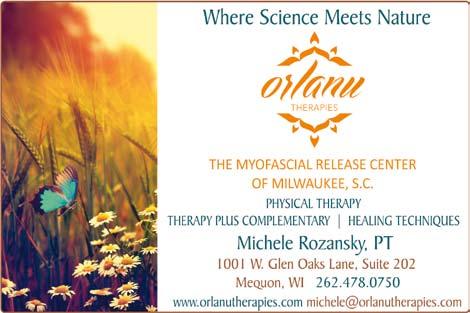
There’s evidence that relaxation techniques may be helpful for insomnia, but it isn’t as strong as the evidence favoring CBT-I. Relaxation techniques, such as guided imagery and progressive muscle relaxation, are safe and easy to use.
Some studies suggest that yoga can be helpful for sleep. Studies in people with cancer, women with sleep problems, and older adults showed beneficial effects of yoga on sleep. And in a national survey, more than half of adults who practice yoga reported improved sleep.
Tai chi may be helpful for people with sleep problems. Studies from several countries show that practicing tai chi may improve sleep quality.
There’s limited evidence that mindfulness meditation may help reduce insomnia and improve sleep quality. Mindfulness practices may be better than educationbased treatments for sleep problems, but they don’t seem to be more effective than cognitive behavioral therapy or exercise.
If you think you may have a sleep
problem, let your health care provider know. The National Heart, Lung, and Blood Institute has information that can help you prepare for your office visit.

Sleep needs vary from person to person, and they change throughout the lifecycle. Newborns sleep between 16 and 18 hours a day, and children in preschool sleep between 10 and 12 hours a day. School-aged children and teens need at least 9 hours of sleep a day. Research suggests that adults — including seniors — need at least 7 to 8 hours of sleep each day to be well rested and to perform at their best.
Studies have linked sleep to our ability to learn, create memories, and solve problems. Sleep has also been tied to mood. Without enough sleep, a person has trouble focusing, and responding quickly — a potentially dangerous combination, such as when driving. In addition, mounting evidence links a chronic lack of sleep with an increased risk for developing obesity, diabetes, cardiovascular disease, and infections.
The quality of sleep is also important. How well rested you are and how well you function the next day depend on your total sleep time and how much of the various stages of sleep you get each night. Yet, each year an estimated 70 million adult Americans have some type of sleep problem.
“Although there are times during the day when we are naturally likely to feel drowsy, in many cases, sleepiness is a sign that something is amiss,” adds Twery. “The handbook offers several ideas to help you improve your sleep, but if you feel that you regularly have problems breathing during sleep, wake up unrefreshed after a full night’s sleep, or frequently feel very sleepy during the day, you should see your doctor to find out if you could have a sleep disorder.”

January 2023 MHL 21
“Our brains are very active during sleep, and research has shown that adequate sleep is important to our overall health, safety, and performance,”
sleep
Lifestyles
WHO WE ARE
WHO WE ARE
Mission Creek is the best local assisted living and memory care for you, your family, friends, and loved ones. We work hard to keep our residents and this community great.
Mission Creek is the best local assisted living and memory care for you, your family, friends, and loved ones. We work hard to keep our residents and this community great.
WHAT WE DO
WHAT WE DO
We work directly with our residents and their families to keep everyone involved with their interest and pursuits. Your community remains at the center of life, alongside top-of-the-line care for a comfortable and fulfilling lifestyle.
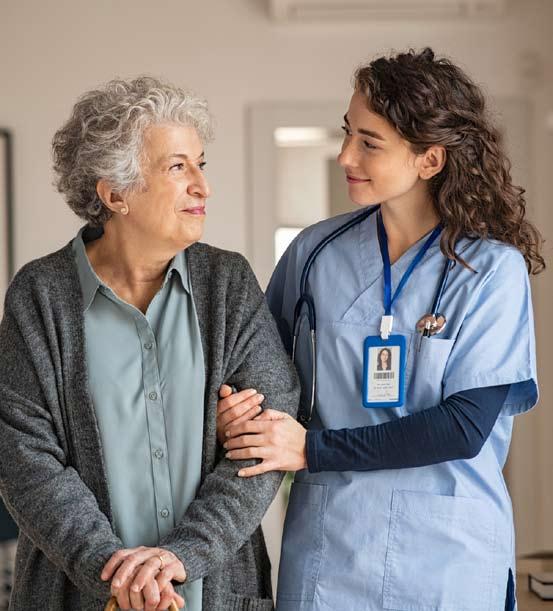

We work directly with our residents and their families to keep everyone involved with their interests and pursuits. Your community remains at the center of life, alongside top-of-the-line care for a comfortable and fulfilling lifestyle.

Mission Creek 3217 Fiddlers Creek Dr, Waukesha, WI 53188 (262) 832-1020

MODERN HEALTH AND LIVING Senior A POSITIVE GUIDE TO THE NEXT PHASE OF LIFE
SENIORLIFESTYLE.COM
LEARN
MISSION CREEK
VISIT
OR CALL 262-896-8888 TO
MORE.
www.missioncreekofeden.com
22 MHL January 2023
SAD Seniors: How to Protect Yourself from Seasonal Affective Disorder


SAD has a range of symptoms and can vary in duration and severity.
Revitalize Wellness Corner with Lee Zehm-Clay RN, BSN, FCN, HES St. Camillus Revitalize Wellness Manager

Seasonal Affective Disorder (SAD) is a type of depression some people experience at the same time every year. It occurs typically in the late fall and winter months, especially in the northern regions of the country where winter days are shorter. The exact cause of SAD is unknown but it is thought to be related to the change of seasons. Many experts believe the lack of exposure to sunlight brings on this condition. As with other forms of depression, SAD has a range of symptoms and can vary in duration and severity. Common symptoms include the following:
• Listless feelings, hopelessness or anxiety on most days
• Fatigue, sluggishness, having low energy or oversleeping
• Loss of interest in favorite activities or hobbies
• Inability to concentrate
• Avoiding social gatherings or activities
• Appetite changes
Older adults are at risk of SAD therefore it is important to monitor your emotional wellbeing. Talk to your health care provider about options to alleviate your symptoms. Treatment plans can include light (photo) therapy, medications and psychotherapy. Here is a list of a few self-help tips you can also consider.
• Keep your house well lit. (Sit close to windows when the sun is shining brightly or consider using a full spectrum lamp for cloudy days.)
• Exercise regularly - consider yoga or EnerChi (both offered at St. Camillus.)
• Eat a well-balanced diet that includes berries, foods rich in Vitamin D and omega 3 fatty acids ad well as foods high in folic acid.
• Stick to your treatment plan.
On occasion, it is normal to feel down or have low energy. However, if you feel depressed for days at time or cannot find the motivation to do activities you normally enjoy, pay attention to that. Don’t brush off that yearly feeling of sadness as a simple case of the “winter blues.” Talk to your health care provider and take steps to keep your mood and motivation steady throughout the year.
January 2023 MHL 23
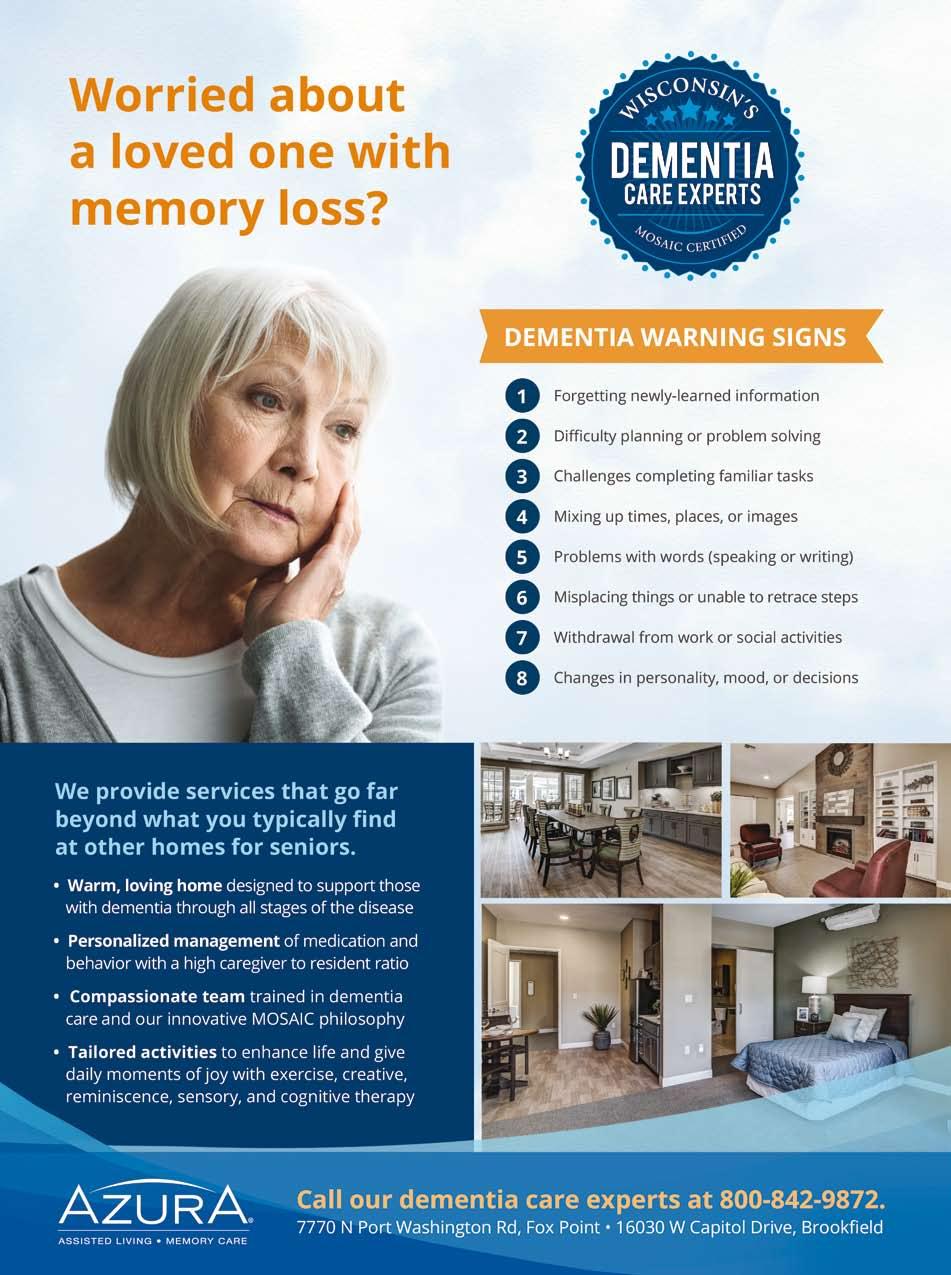
• Beans and legumes (such as garbanzo beans, kidney beans, lentils)
• Coffee
• Tea (green tea, black tea, chamomile, ginger, etc.)
What to Limit or Avoid
• Dairy (including milk, cheese, ice cream)
• Meat and poultry (chicken, steak, pork)
• Processed meats, such as sausages and hot dogs

• Eggs
• Refined grains (such as white rice, white pasta, white bread)


• Sugary foods and drinks
• French fries, potato chips, corn chips (anything deep fried)
Other Benefits of Eating Plant-based: Diabetes
Plant-based diets prevent, manage, and reverse type 2 diabetes. Plant-based diets lower body weight, improve insulin function, and increase beta-cells’ ability to regulate blood sugar, which helps reverse symptoms associated with type 2 diabetes.
Weight Loss
Plant-based diets lead to weight loss, even without exercise or calorie counting! Replacing high-fat foods with vegetables, fruits, whole grains, and legumes naturally reduces calorie intake.
Cancer



Avoiding animal products and high-fat foods and eating plant-based foods can lower the risk of developing certain types of cancer.
Brain Health

Saturated fat and trans fat—found in dairy products, meat and fried foods—can increase the risk for Alzheimer’s disease and other cognitive conditions. A plant-based diet avoids these foods and is rich in antioxidants, folate, and vitamin E, which may offer a protective effect.
Summary

Instead of a diet centered on meat and dairy, the starring roles of a plant-based diet are vegetables, fruits, and whole grains. It’s a fresh, flavorful approach to eating and has been shown to have significant health benefits, including weight loss and disease prevention.
Susan Goulet and her partner, Lars Schloemer own and operate the Blooming Lotus Bakery, a one-of-a kind bakery that is grain-free, gluten-free and vegan. All items are made with nut flours and seed flours and coconut palm sugar instead of cane sugar. The bakery is also a whole plant bakery and does not use any oil in their products
which supports such treatments, and in fact, herbal remedies have been found to impact the safety of more invasive or prolonged dental procedures and can lead to additional complications if they interact with a patient’s current medications.


Another epitome of introduction in dentistry is a much talked about “Green Dentistry.” It is a known phenomenon that the color green has healing power and is understood to be the most restful and relaxing color. Green can help to enhance vision, stability, and endurance. Renewal, growth, and hope are related to this color, and it indicates safety in the advertising of drugs and medical products. Green dentistry is an approach to dentistry that combines dental practices and environmental conservation. Eco-friendly dentistry is a newly evolving practice of dentistry, which encompasses a simultaneous devotion to sustainability, prevention, precaution, and a minimally invasive patient-centric as well as global-centric treatment philosophy.
Similar reasons lay behind criticisms of the use of craniofacial analysis, homeopathic remedies, and acupuncture in dentistry. These treatments are promoted for dealing with various conditions, ranging from toothaches and bad breath to infections and pain relief. While, for instance, craniofacial therapy has far less scientific support overall than acupuncture, none of these techniques have sufficient well-designed studies which demonstrate their effectiveness.
Misanthropists of alternative dentistry also note that the fees charged by such practitioners are generally several times higher. It is claimed that alternative dentistry is merely the exploitation of niche health beliefs and gimmicks to rationalize higher fees. A potential example of this is the DIAGNOdent, a nonvalidated device purported to be able to detect alleged lesions described “cavitation’s” or the nonevidence-based utilization of apparatus by certain “biologic dentists” during removal of amalgam fillings, intended to reduce mercury toxicity by eliminating inhaled airborne material.
Mercury is being used in the form of dental amalgam restorative material for more than 150 years. In recent years, the impact of heavy metal contamination of water systems by dentists, through the production of dental amalgam waste is much of a concern. Dental amalgam contains mercury with silver, tin, and lead and other minerals that can contaminate the environment. However, once mercury enters water or soil, bacteria convert it into methylmercury, a potent neurotoxin that can cause brain, kidney, and lung damage in humans. As severe as the consequences of mercury poisoning are, it is amazingly easy for people to reach high levels of exposure.
January 2023 MHL 2�
diet<<page 20 green<<page
�

Family Participation Makes a Difference for Seniors on the Move

According to research by the American Association of Retired Persons (AARP), 75 percent of adult children think about their parents’ ability to live independently as they age. While nearly 90 percent of seniors want to stay in their own homes, it’s not always possible, or in their best interests to do so. Several factors including changing health status, ability to manage day-to-day, home maintenance and safety can raise concerns for adult children who can play a key role in helping their loved one with the decision to move.
Getting the conversation going
John Weitekamp, whose mother Essie made the move from her lifelong home of over 40 years, said he and his siblings were involved in the process but respected that ultimately, the decision was hers. “She was happy in her home and didn’t want to leave,” John said. But a hospitalization for the flu led to discussions about her living situation and the need for a change.
While the hospital team recommended Assisted Living for Essie, she felt that she was more suited for an Independent Living apartment where she could maintain her interests and activity level. “It’s important for family members to understand the
difference between Assisted and Independent Living,” said John, Kim Skoczynski, Senior Living Specialist at Clement Manor, agrees.

“We help families discern the best placement for their loved one by providing them with a Needs Assessment Checklist,” said Kim. “Completing the checklist together creates a comfortable way to talk about the need for a move, as well as shed light on the best environment,” she said. The checklist, which covers activities of daily living from bathing and dressing to managing laundry, groceries and bills, grades the level of help needed – none, some, or a lot. The checklist also considers the older adult’s physical health status, medication management and overall mobility. Safety and environmental questions including home repairs, floor surfaces that minimize fall risk, and security are also addressed.
Finding the best place
As Essie and her family discussed her situation, they agreed an Independent Living apartment would be the best match for her needs and interests. Still, according to John, she didn’t think life could be better in a new place. “She had the idea of an “old folks’ home” fixed in her mind,” he said. “From our conversations we knew that intellectual stimulation and a faith atmosphere were important to her, so we kept that in mind as we visited facilities.”
Essie and her children visited six facilities in the Milwaukee metropolitan area. They found the fit they were looking for in Clement Manor. “We noticed right away that people were engaged and not just sitting around.” John said. The “life enriched” mission and high level of intellectual stimulation through daily activities and the Center for Life Enrichment influenced their decision, along with a continuum of care should Essie’s needs change.
Getting ready for the move
Essie had full participation from her family with cleaning out the house and moving. “We went through pictures and there were some tears,” said John. “In the end, mom realized, it was just stuff and you can’t take it with you.’” If family members wanted items, they were passed along, if not, Essie donated them to a charity where someone else could use it.
Clement Manor recognizes how daunting the decision to move, and the downsizing that comes with a decision, can be. “Clearing the Way for a Move” Workshop and Open House on Friday, September 14 from 10:00 a.m. to 12 noon offers practical tips for seniors on how to get started clearing items, how to navigate the sale of a home, and a chance to meet Independent Living residents who’ve successfully made the move.
For information or to register for the workshop, contact Kim at (414) 546-7000 or info@clementmanor.com.
January 2023 MHL 2�
Give Yourself A Healthy Living Boost
To get all of the benefits of physical activity, try all four types of exercise — endurance, strength, balance, and flexibility.
Try to build up to at least 30 minutes of activity that makes you breathe hard on most or all days of the week. Every day is best. That’s called an endurance activity because it builds your energy or “staying power.” You don’t have to be active for 30 minutes all at once. Ten minutes at a time is fine.
How hard do you need to push yourself? If you can talk without any trouble at all, you are not working hard enough. If you can’t talk at all, it’s too hard.
Keep using your muscles. Strength exercises build muscles. When you have strong muscles, you can get up from a chair by yourself, lift your grandchildren, and walk through the park.

Keeping your muscles in shape helps prevent falls that cause problems like broken hips. You are less likely to fall when your leg and hip muscles are strong.
Do things to help your balance. Try standing on one foot, then the other. If you can, don’t hold on to anything for support. Get up from a chair without using your hands or arms. Every now and then walk heel-to-toe. As you walk, put the heel of one foot just in front of the toes of your other foot. Your heel and toes should touch or almost touch.
Stretching can improve your flexibility. Moving more freely will make it easier for you to reach down to tie your shoes or look over your shoulder when you back the car out of your driveway. Stretch when your muscles are warmed up. Don’t stretch so far that it hurts.
Who Should Exercise?
Almost anyone, at any age, can do some type of physical activity. You can still exercise even if you have a health condition like heart disease or diabetes. In fact, physical activity may help. For most older adults, brisk walking, riding a bike, swimming, weight lifting, and gardening are safe, especially if you build up slowly. But, check with your doctor if you are over 50 and you aren’t physically active.
Other reasons to check with your doctor before you exercise include:
Any new symptom you haven’t discussed with your doctor
Dizziness or shortness of breath

Chest pain or pressure or the feeling that your heart is skipping, racing, or fluttering
Blood clots
An infection or fever with muscle aches
Unplanned weight loss
Foot or ankle sores that won’t heal
Joint swelling
A bleeding or detached retina, eye surgery, or laser treatment



A hernia
Recent hip or back surgery
Safety Tips
Here are some things you can do to make sure you are exercising safely:
Start slowly, especially if you haven’t been active for a long time. Little by little, build up your activities and how hard you work at them.
Don’t hold your breath during strength exercises. That could cause changes in your blood pressure. It may seem strange at first, but you should breathe out as you lift something and breathe in as you relax.

Use safety equipment. For example, wear a helmet for bike riding or the right shoes for walking or jogging.
Unless your doctor has asked you to limit fluids, be sure to drink plenty of fluids when you are doing activities. Many older adults don’t feel thirsty even if their body needs fluids.

Always bend forward from the hips, not the waist. If you keep your back straight, you’re probably bending the right way. If your back “humps,” that’s probably wrong.
Warm up your muscles before you stretch. Try walking and light arm pumping first.
Exercise should not hurt or make you feel really tired. You might feel some soreness, a little discomfort, or a bit weary, but you should not feel pain. In fact, in many ways, being active will probably make you feel better.
28 MHL January 2023 Making Winter Wonderful at VMP 8621 W. Beloit Road, West Allis | www.VMPcares.com Stay warm this holiday season at VMP Healthcare & Community Living. With care services, unique amenities, and a passionate team, VMP is dedicated to helping you live your best life. Schedule your tour today to experience our community. Call (414) 607-4322 or visit www.VMPcares.com Call now to receive a special offer
independent living
Optimism Linked To Longevity And Well-being In Two Recent Studies
Optimism is linked to a longer lifespan in women from diverse racial and ethnic groups, and to better emotional health in older men, according to two NIA-funded studies. One study showed that the previously established link between optimism and longevity applies to racially and ethnically diverse populations of women and that the link is only partially due to changes in health behaviors. The other study showed that more optimistic men have fewer negative emotions, due in part to reduced exposure to stressful situations. These findings suggest that increasing optimism may be a way to extend lifespan and improve well-being in older adults.
Previous research has established that optimism is associated with healthier aging and longevity. However, most of these studies were in non-Hispanic White populations. In a collaborative study published in the Journal of the American Geriatrics Society, researchers from Harvard University; Boston University School of Medicine; Kaiser Permanente; University of California, Davis; University of California,
San Diego; and the Warren Alpert Medical School of Brown University explored the link between optimism and longevity in a racially diverse population of women.
Researchers analyzed data from over 150,000 women ages 50–79, collected as a part of the Women’s Health Initiative (WHI). The WHI included non-Hispanic White, Black, Hispanic/Latina, and Asian women. Each participant in the study completed a validated optimism test and provided demographic and health information. When scientists analyzed the data, they found that the most optimistic women lived, on average, 5.4% longer (approximately 4.4 years) than the least optimistic women. The most optimistic women were also more likely to achieve exceptional longevity, defined as living over 90 years. These trends were consistent across all racial and ethnic groups.
Scientists also tested the hypothesis that optimistic women live longer because they have healthier lifestyles. Previous studies showed that optimistic people are likelier to engage in behaviors that promote health and longer lifespan. Given this, the authors used statistical methods to determine whether lifestyle factors could explain the link between optimism and lifespan. Specifically, the study collected information on exercise, diet, body mass index, smoking history, and alcohol consumption. The researchers found that these factors only accounted for 25% of the link between optimism and longevity. These results suggest that the link between optimism and lifespan may be partly due to healthier behaviors, but that other pathways and factors are also likely to be involved.

Another NIA-funded study, published in The Journals of Gerontology, explored the idea that reductions in stressful experiences could be one of the factors that explain the link between optimism and better health. Prior studies from other research groups established that stress exposure is linked to worse health and a shorter lifespan. In this study, a group of scientists from the VA Boston Healthcare System, Boston University, Harvard T.H. Chan School of Public Health, Rush Medical College, and Northwestern University analyzed the relationship between optimism, stress, and emotional well-being in older men.
Researchers found that more optimistic men experienced fewer negative emotions. More than 50% of this link could be explained by reduced exposure to daily stressors. These results suggest that optimism may cause older adults to avoid, direct their attention away from, or change how they think about stressful situations. The authors note that their study is limited in that participants were all male, primarily White, and had a higher socioeconomic status than the general population. To determine whether the results apply to everyone, the study should be repeated in more diverse populations.

January 2023 MHL 2� wellness
Research has established that optimism is associated with healthier aging and longevity
Alta Mira II Menomonee Falls - 55+ 262-719-3884
Alta Mira II offers one & two bedroom apartment homes for those 55 & older. Alta Mira II is a non-smoking community that was constructed with special features for those who may be deaf or hard of hearing. Alta Mira II offers an array of amenities and social activities for its residents. Income restrictions apply.
Bell Tower Place Franklin - 55+ 414-254-8410
Bell Tower Place is a non-smoking community offering elegant one & two bedroom apartment homes. Located in a quiet, residential neighborhood you are still situated in close proximity to all the modern conveniences you will need to live an independent, maintenance-free lifestyle.
Cedar Glen Wawautosa - 55+ 262-719-3884
Cedar Glen offers spacious one & two bedroom apartment homes centrally located in Wauwatosa, just 10 minutes from all of your shopping & dining needs. A variety of activities, 24-hour emergency maintenance and on-site management allow for the independent lifestyle you deserve! Income restrictions apply.

Granville Heights Milwaukee - 55+ 414-357-6740


Granville Heights offers one & two bedroom apartment homes in a non-smoking community. Centrally located, you will have easy access to churches, grocery stores, restaurants and more while enjoying a relaxed, maintenance-free lifestyle within the community. Income restrictions may apply.

High grove offers luxury one adn two bedroom independent senior apartments located on the Woodland Ridge Campus. Our spacious apartmetns incldue a patior



non-smoking community is the perfect place to call home. Hill Crest, located on the Woodland Ridge Campus offers centrally located one adn two bedroom apartment homes fo rthe independent senior. In close proximity to all of your shopping, dining and entertainment needs, our social activities will have your social calendar full year-round. Income restrictions may apply. Located on the Woodland Ridge Campus adjacent to the
Crest* 414-541-3333


Independent, Senior Communities Live your best life! Call
a tour today!
for
We invite to take a tour at any of our Horizon managed properties www.horizonseniorhousing.com Hill
Crest
High Grove 414-541-3333 Our
View*
414-541-3333
Towering Woods Nature Conservancy, Crestview offers one & two bedroom apartment homes in a non-smokin, pet-friemdly (restrictions apply) community. Enjoy an indepdendent lifestyle with 24-hr. emergency maintenance available. Income restrictions may apply.
Can Houseplants Really Improve Indoor Air Quality?
In recent years, more and more people have developed an interest in keeping houseplants. There are many potential reasons why there has been such a resurgence in indoor gardening. Many people took up tending to houseplants during the pandemic as a quarantine hobby. As the years have progressed, people’s interest in keeping houseplants has continued to thrive and it’s easy to understand why. They liven up any living space, and provide people with something to care for—both which provide many mental health benefits. However, there has been speculation as to whether or not keeping houseplants provides environmental and health benefits through purifying the air in our homes.

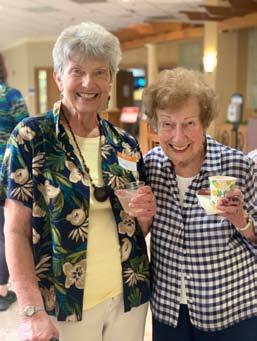
Houseplants Indoor Air
Spider plants are great at filtering indoor air but you would need a lot of them, along with some ivy and philodendrons to really make a difference in your home.
The short answer is that houseplants do have the potential to purify the air in our
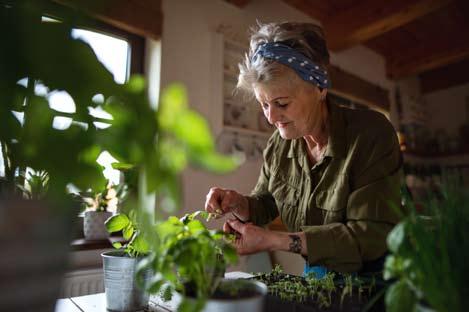

homes. When plants perform photosynthesis, they take carbon dioxide out of the air and emit oxygen as a byproduct. Since plants output oxygen into the surroundings, by scientific definition they have the potential to increase the oxygen concentration in your living space. However, the degree to which they can detoxify the air and measurably make a difference to the air quality in a person’s living space is another matter.
“There is currently no evidence…that a reasonable number of houseplants remove significant quantities of pollutants in homes and offices,” reports the U.S. Environmental Protection Agency. Indeed, in order to make a considerable difference in the air quality of your home, you’d have to keep a large number of houseplants under specific climatic conditions, requiring a large amount of effort, time and money that isn’t realistic for most of us. Having houseplants can even worsen indoor air quality if you are overwatering them, as overly damp soil may promote the growth of microorganisms which can affect allergic individuals.
However, if you are interested in keeping houseplants that have the potential to clean the air in your home, there are a variety to choose from. There are two major air pollutants found in homes: particulates—dust, mold, etc.—and volatile organic compounds (VOCs)—gases that are released from materials such as fabric, paint and cleaning products. Spider plants, philodendrons, ZZ plants, dumb canes, pygmy date palms and ivies are among the plants suited to indoor living that are especially good at filtering out particulates. Other plants especially good at removing volatile organic compounds (VOCs) out of your indoor air include pathos, bamboo, Areca palms, rubber plants and peace lilies. You can usually find a wide assortment of indoor plants — and get more advice — at a local nursery or garden center.
Of course, there are also many other ways to improve the air quality of your home. Keeping a clean home reduces the amount of particulate matter in the air. Investing in air purifiers and home air filters can help reduce both the concentration of VOCs and particulate matter that could be impairing your indoor air quality. Simple tasks like opening your windows and airing out your home in the warmer months increases air circulation and benefits your home’s indoor environment. emagazine.com
The Take Home
With the rising level of pollutions, the air around is deteriorating day by day. This increases the chances of diseases like asthma, sinus, bronchitis, and many other breathing problems. While the government and other health regulatory bodies are working on the best possible solutions, individuals have to take steps in control to help the pollution levels go down. One can not avoid the pollution and inhaling toxic substances, one can still make sure sufficient supply of clean air and oxygen indoors with indoor plants. Keeping plants indoors not only improves air quality but can also improve your mental health and make you feel more peaceful.
January 2023 MHL 31 Reduced entrance fees on select models! Ask about FREE DINING for a year! 8220 Harwood Avenue, Wauwatosa | harwoodplace.org | 414-256-6814 LIVE THE HARWOOD LIFESTYLE — ENJOY RETIREMENT
keeping houseplants provides environmental & health benefits






Heritage Elm Grove 800 Wall Street Elm Grove, WI 53122 Heritage West Allis 7901 West National Ave. West Allis, WI 53214 Heritage Monona 111 Owen Road Monona, WI 53716 Heritage Middleton 6234 Maywood Ave. Middleton, WI 53562 Lincoln Village 1330 West Lincoln Ave. Port Washington, WI 53074 Aspire* 825 Cobblestone Lane Kimberly, WI 54136 Heritage Muskego* S64 W13780 Janesville Rd. Muskego, WI 53150 Heritage Deer Creek 3585 147th Street New Berlin, WI 53151 Lexington Heritage 5020 South 107th Street Heritage Lake Country* 2975 Village Square Drive Hartland, WI 53029 Heritage Court N48W14250 W. Hampton Ave. Menomonee Falls, WI 53051 Heritage Court 3515 East Hamilton Ave. Eau Claire, WI 54701 Heritage Waukesha 1831 Meadow Lane Pewaukee, WI 53072 Heritage Oakwood Hills 3606 Damon St. Eau Claire, WI 54701 Put more life into your Lifestyle! • Warm-Water Pools at our premier properties* • On-Site Restaurant Style Dining • Fitness Centers with on-site Therapy Services • Outdoor Grills and Firepits • Housekeeping Services • Entertainment Theaters at our premier properties* • Transportation provided for scheduled events & activities • Spacious Floor Plans We can help you with the Next Step! • Independent • Assisted Living • Memory Care • Pendant Program: Safety, Security & Peace of Mind HERITAGESENIOR.COM *Oshkosh Coming Summer 2021! • 150 Aspire Lane, Oshkosh, WI 54904
Everyone forgets from time to time, but if you notice that your parent or senior loved one is unable to recall things that are a part of their daily life, it could be a sign of dementia.
How to Recognize Dementia in Seniors
The decision about whether your parents should move is often tricky and emotional. Each family will have its own reasons for wanting (or not wanting) to take such a step.
When someone is experiencing a memory loss condition, they may need 24-hour care and programs to promote their brain’s health.
Memory care facilities do all that and more. Their staff is dedicated to assisting residents in their daily activities and making sure they are healthy.
You might have to have a serious talk with your family members. One family may decide a move is right because the parents can no longer manage the home. For another family, the need for hands-on care in a long-term care facility motivates a change.
Let’s look at multiple warning signs that your older loved one may be developing some level of cognitive impairment.
How to Recognize Dementia in Seniors

In the case of long-distance caregivers, the notion of moving can seem like a solution to the problem of not being close enough to help. For some caregivers, moving a sick or aging parent to their own home or community can be a viable alternative. Some families decide to have an adult child move back to the parent’s home to become the primary caregiver.
If you are concerned about a loved one and the possibility of dementia, you are certainly not alone. It is estimated that well over 7 million people in the U.S. over the age of 65 are living with some form of the disease. Understanding the onset of dementia can sometimes be difficult for family members to navigate. Let’s look at multiple warning signs that your older loved one may be developing some level of cognitive impairment.
Keep in mind that leaving a home, community, and familiar medical care can be very disruptive and difficult for the older parent, especially if they are not enthusiastic about the change. You might first want to explore what services are available in
Memory Loss
For 135 years and counting, Eastcastle Place offers a full continuum of care in Milwaukee’s vibrant East Side. Our 5 Star rated facilities offer high quality care and staff to resident ratios above industry standards and continues to be a dynamic retirement community. As a member of Leading Age Echelon Program , Eastcastle Place is passionate about providing a high level of excellence in care and service to our residents.
Eastcastle Place has specially designed memory care support where you’ll find advanced therapies and specialized care programming for those with a memory related diagnosis.
A senior’s pattern of forgetting a person’s name, repeating themselves multiple times, or failing to remember appointments are events that should be addressed with a doctor right away.
your parents’ community to help them in their home—including home health care, housekeeping, personal care, and transportation services.
Difficulty Doing Routine Tasks
People who have dementia often have difficulty performing daily tasks, even those that they have done every day for decades. Look for changes in your loved one’s routines such as eating, bathing, or other activities.
Older adults and their families have some options when it comes to deciding where to live, but these choices can be limited by factors such as illness, ability to perform activities of daily living (for example, eating, bathing, using the toilet, dressing, walking, and moving from bed to chair), financial resources, and personal preferences.
If you see that their daily habits are no longer being followed, have a gentle conversation about it. There could be logical reasons for a change in behavior, but it might also be a sign of a developing cognitive impairment.
Making a decision that is best for your parent—and making that decision with your parent—can be difficult. Try to learn as much as you can about possible housing options.
Disorientation
What Is Assisted Living?
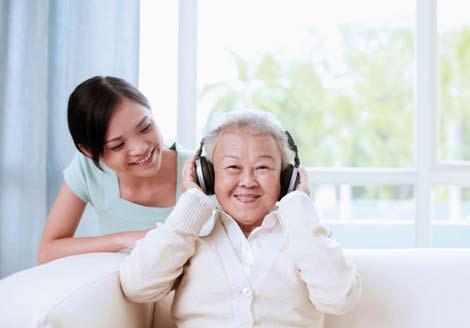
People who have dementia can become easily confused about where they are, or how to return home from a trip to the grocery store. In addition, some seniors with cognitive issues might believe that they are currently living in a time from the past.
Assisted living is for people who need help with daily care, but not as much help as a nursing home provides. Assisted living facilities range in size from as few as 25 residents to 120 or more. Typically, a few “levels of care” are offered, with residents paying more for higher levels of care.

Should you experience these symptoms with your loved one, be sure to document when and where it occurred. This information will be very helpful to medical professionals in their attempt to diagnose a possible issue.
Assisted living residents usually live in their own apartments or rooms and share common areas. They have access to many services, including up to three meals a day; assistance with personal care; help with medications, housekeeping, and laundry; 24-hour supervision, security, and on-site staff; and social and recreational activities. Exact arrangements vary from state to state.
Find a Community in your area
No matter your need, we have the right community for you. Get started finding the perfect new home for you or your loved one today! Moving into a memory care facility is beneficial for many individuals. When elders with memory loss conditions make the move, they can receive the care you’ve been looking for.
Older adults, or those with serious illness, can choose to:
Stay in their own home or move to a smaller one
Language Problems
Move to an assisted-living facility



Move to a long-term care facility
Move in with a family member
Everyone experiences from time to time the inability to recall a word during a conversation. However, a person with dementia will tend to forget simple words, lose track of the natural progression of a discussion, or use the wrong word when describing something. Should this occur with your loved one, speak to a doctor to determine next steps.
Some families find a conference call is a good way to talk together about the pros and cons of each option. The goal of this call is to come up with a plan that works for everyone, especially your parent. If the decision involves a move for your mom or dad, you could, even from a distance, offer to arrange tours of some places for their consideration.
Rapid Mood Changes
One of the more common symptoms of dementia is a rapid change in mood or personality. Look for patterns of mood swings in your loved one or sudden bouts of anxiety, anger, depression or apathy. Speak with your loved one about what they are feeling, and ask what you can do to help.
How do I know when someone needs assisted living?
In general, it’s best to start with a physician’s assessment. Depending on your situation, or that of your loved one, you can find the right level of assistance. When help with daily tasks is needed — taking medicines, bathing, dressing, meals, transportation and housekeeping — an assisted living residence can be the answer. Trained professionals provide this assistance while helping preserve an individual’s independence.
If there appears to be no logical explanation for a severe mood swing in a senior, it could be a sign of developing dementia.
Our Heartfelt Connections Program provided by our Skilled Care Specialists work closely with residents, families and staff members to develop the best care plan in a supportive, purposeful environment.

This builds a sense of comfort through nurturing mind, body and spirit with stimulating activities and personal guidance each day.
Alzheimer’s and Dementia Care
It’s our privilege to support your loved one.
40 MHL JANUARY 2021
living and Caregiving S A Private Suites in a Secure Environment Three chef prepared meals per day 24 Hour emergency response system All Utilities (except phone) Cable TV and Wi Fi Daily housekeeping & laundry services Scheduled transportation On site activities and events designed toward memory loss
Assisted
2505 East Bradford Avenue · Milwaukee, WI 53211 · 414 963 8480 · www.eastcastleplace.com
January 2023 MHL 33
memory care Receive the care you’ve been looking for
For most, it is simply looking at the calendar and marking it chronologically. However, not everyone ages in the same way. Age depends on more than just how many birthdays you mark. True age depends on your attitude, sense of purpose, activity level, eating and sleeping habits and much more. Medical science is now using lifestyle habits and other biomarkers to measure one’s age. To help you determine your “wellness age”, here are 10 markers:
• Be physically active: People who exercise moderately for 20-30 minutes daily improve their wellness age by 3-6 years.
• Be smoke and tobacco free: Smoking and using other tobacco products can reduce your wellness age 3-6 years. Nicotine damages the epithelial lining of your arteries and carbon monoxide in smoke suffocates the cells and cause premature cellular death.
• Improve bone density: Increasing the strength of your bones adds 2-3 years to your wellness. Participating in walking, running, lifting, and other weight bearing activities helps bones absorb more calcium and other vital bone-building nutrients
thereby strengthening your bones.
• Reduce body fat levels and staying lean: As people age chronologically, body fat levels increase as much as 5% per decade. Accumulating extra fat especially around the mid-section disrupts the hormonal balance and ages the cells more rapidly. Carrying 5-10 extra pounds can reduce your wellness age by 2-3 years. An extra 30- 50 pounds can reduce as much as 6-8 from your wellness age.
• Have a healthy blood sugar tolerance: Elevated fasting blood sugar levels greater than 110 ml/dl can reduce 3-4 years from your wellness age. Increased fasting blood sugar levels indicate the breakdown of the insulin sugar system which affects every other biological system in the body. Your goal is to strive for between a 70-90 fasting blood sugar level without medication. Exercise, healthy eating and embracing effective stress management are the best ways to improve blood sugar tolerance.
• Improve cholesterol ratio: Having plenty of whole grains, fruits and vegetables, and refraining from animal products greatly improves LDL levels. Moderate physical exercise is the best way to improve HDL levels.
• Improve blood pressure: Having a blood pressure of less than 120 over 80 without medication can add 4 to 5 years to your wellness age.
• Get at least 7 hours of sleep a night: Add 5-8 years to your wellness age by going to bed and getting up at the same time every day and achieving 7 or more hours of sleep. Optimal sleep allows the body and mind to rejuvenate and regenerate. On of the quickest ways to age your body is to short change your sleep.

• Practice meditation and other stress management skills: Taking time to meditate and practice mindfulness on a daily basis can add up to 8 years to your wellness age. Prayer, deep breathing, visualization and practicing faith are the best ways to combat negative stress.
• Eat 9 servings of fruits and vegetables and reduce refined carbohydrates and animal products: Eating plenty of fruits, vegetables and whole grains every day and reducing or eliminating animal products adds 4 to 6 years to your wellness age. Just by altering your diet on a small scale, you can experience modest improvements in your wellness age.
Make the decision to adjust your Wellness Age. Find a program that addresses all levels of health and then get involved. Review the daily lifestyle you lead and make adjustments to ensure optimal wellness is part of your world. Residents of retirement communities have built in programs to keep them active and sharp. At Tudor Oaks Retirement Community the Wellness Program offers opportunities in 6 dimensions of wellness which all assist in adjusting your wellness age. For more information on the program and to learn how to become part of the class call 414-525-6500.
This information is provided by : Tudor Oaks Retirement Community
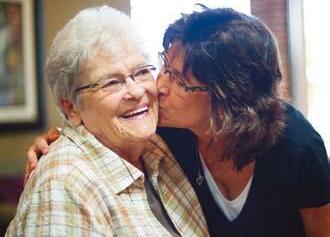




Tudor Oaks Senior Living Community S77 W12929 McShane Drive, Muskego, WI 53150 414-529-0100 www.TudorOaks.net Tudor Oaks Senior Living Community is owned and operated by American Baptist Homes of the Midwest, a not-for-profit provider of senior housing and healthcare since 1930. Call 414-529-0100 for a tour or visit www.TudorOaks.net for a fly-thru video tour of our community. Tudor Oaks : We’re Always Here For You! ■ Assisted Living : Style-smart, charming private apartments ■ Memory Care: Personal suite with private bathroom ■ Rehab Stays Customized therapy plans, private rooms, TV, phone & Wifi included. ■ Wellness Programs ■ Beautiful Campus Setting 34 MHL January 2023
gauge your wellness
Are
Your
True age depends on your attitude, sense of purpose, activity level, eating and sleeping habits and much more.
age There
Many Ways To Determine
Age
The Art Of Downsizing
You are eager for a change, want to simplify your life, want to move closer to friends or family members, or want to start a new phase in life.
What is downsizing?
Downsizing is when you buy a smaller home than the one you currently have. This is often a decision made by those who now have an empty nest, are struggling to deal with the upkeep of their home or are finding the related costs hard to deal with.
It may just be that you are eager for a change, want to simplify your life, want to move closer to friends or family members, or want to start a new phase in life. Whilst many people have been trying to upsize throughout their home-buying journey, downsizing can offer so many options!
If you are downsizing in later life, it means you can choose a property that will be
better suited to your needs as you get older. Instead of having to contend with your stairs, limited accessibility or a huge garden requiring maintenance, you can pick a property that can work for you.

Reducing the amount of furnishings and personal items for a senior move can be a daunting task, but with the proper preparation and moving firm, a senior move can be completed in a timely, stress-free fashion.
Senior citizens account for 50 percent of the residential moves currently on the housing market, and moving firms offers senior services for seniors moving into downsized living quarters.
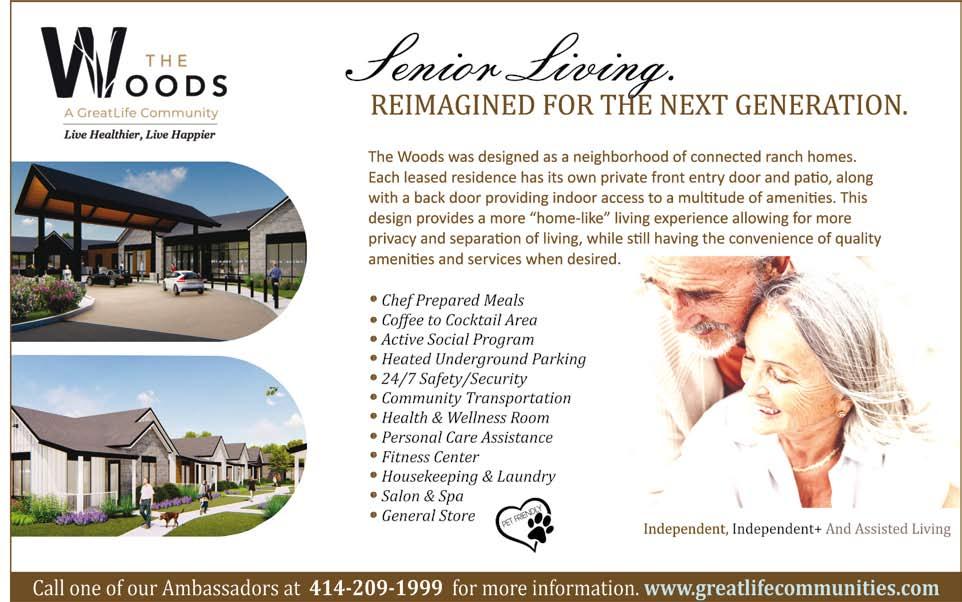
“Reducing the amount of furnishings and personal items can be a daunting task, but with the proper preparation and moving firm, a senior move can be completed in a timely, stress-free fashion.”
With a 21-year track record in the moving and storage industry, BD Movers offers senior citizens advice and complete references from handy men, to charities, even CPA’s and elder lawyers. A senior move can be daunting, but with the correct planning and strategy, downsizing is another step in the life process, adds Baumer.
- Create senior downsizing task list one to three months in advance.
- Get the family involved in the senior move. If you need help, consider hiring a senior move manager.
- Designate items that will be moved, sold or given away. Decide on the item the senior will want to keep, and will fit into the new senior home.
- Be prepared to provide list of inventory to mover, including any legal documentation, regarding power of attorney, etc. if applicable. For instance – if the children are handling the senior moving details, they should show they have authority to do so.
- Sell what you can at auction, online or a yard sale. Some items may have value that can help defray senior moving expenses.
- Donate the rest to reputable charity. Keep receipts for senior tax purposes. If the furniture is still in good condition, a senior’s sofa or dining room table may be a godsend to a family that needs furniture.
- A senior move is not a “self move. A senior move takes the efforts of many people, family and professionals, to make it go smoothly.
- To save on cost, pack as much as the senior and their family can do themselves. A mover will provide this service, but packing items is the simplest way to save cost for the senior move.
- If the senior moving is in their 80′s, and their children are in their 60′s, carrying heavy furniture should be designated as a senior moving service. Use the movers for heavy items and let family members move lamps and pictures.
January 2023 MHL 3�
independent living
I encourage you to reflect on whether the path of discovering and aligning with your true nature could be your commitment this year.

meaning and soul-loss. This happens when we mistake our adapted (goat) self for our true (tiger) self.
If we miss the opportunity to live from our real self during the first half, we are given another chance in the middle of our life. At this juncture, our psyche shifts and demands we begin living from a more authentic place. If we are living out of our ‘goat’ nature by adapting to be accepted, to survive, or even to belong we are compromising the best parts of us. Our feeling function informs us of this through symptoms of mind and body that emerge. Depression, anxiety, and sheer meaninglessness are common ones. We may have trouble sleeping, feel lonely, sad, or isolated. My medical practice is overflowing with people who are seeking the skills to reorient their lives to align with their authentic values. When they do, their symptoms heal.



Years ago, when I worked for corporate health care, hospital administrators informed me that I was dispensable, I had to be a ‘team player,’ generate mega-profit by keeping my patient’s sick and dependent, and if I didn’t adapt to this value system, I would be considered a traitor, an outcaste, a ‘trouble maker’. They character assassinated me when I refused to comply. It was their last ditch attempt to force me to prostitute myself, but rather than betray the sanctity of my vocation, I surrendered the golden handcuffs and ventured out into our community to create an ethical and integrity based model of medicine. While in the corporate system, my patients were actually healing and hospitalizations were reduced, health care costs were significantly lowered. This was a threat to the ‘value’ system of hospital administrators. I realized that healthy patients were a conflict of interest for the hospitals profit margin. Even though I was hired to practice ‘wellness,’ administrators serving the corporate value system were unhappy when it worked. They merely viewed me as a pawn for capturing market share. Wellness and integrative medicine was never their true intent.

At the young age of 36, I left corporate medicine and never looked back.
Physicians working for corporate medicine today have an exceedingly high suicide rate ², currently a 100-fold higher for male physicians than the general population, and 400-fold higher for female physicians.³
Corporate medicine does not care. Physicians are dispensable and simply cogs in the corporate wheel. They are a means for generating profit through patients at the cost of the sanctity of medicine. Sickness and disease are expected to be managed for generating profit. Healing reduces revenue, and is discouraged.
Physicians who have adapted to this system are like the tiger living among goats in our story. If we are to reawaken the soul of medicine, we must recognize our true calling, as well as our true nature. Money and patriarchy are never worth losing ourselves for. Integrity and healing must return as core values in medicine. Serving the true vocation versus profit (at all costs) is what is needed to restore meaning for physicians and medicine at large. The courage to embody this is what will eventually heal health care.
The way that corporate medicine conditions physicians to adapt is much like the way our collective culture conditions each of us. It takes courage, insight and a dedicated effort to unhook ourselves from collective values and align with our true nature. It requires personal sacrifice, yet the rewards of living this way are abundant priceless. Living from authenticity restores health, self-respect and self-worth, and not surprisingly prevents chronic diseases of our mind and body.
I encourage you to reflect on whether the path of discovering and aligning with your true nature could be your commitment this year. You never know what gifts you will find along the way, and getting to know yourself authentically is truly the greatest gift of all.
©January2023, July2016 Kalpana (Rose) M. Kumar M.D., CEO and Medical Director, The Ommani Center for Integrative Medicine, Pewaukee, WI. www.ommanicenter.com Author of Becoming Real: Reclaiming Your Health in Midlife (2nd Edition), Medial Press, 2014. Dr. Kumar is currently accepting new patients. Call 262.695.5311 for an appointment, either virtual or in-person for those free of symptoms.
Links:



¹ The Joseph Campbell Foundation, http://jcf.org/new/, The Complete Works of Joseph Campbell, The Tiger Who Thought He was a Goat, 1991 Recording


² KevinMD.com, http://www.kevinmd.com/blog/2013/05/learned-saving-physicians-suicide.html, What I’ve learned from saving physicians from suicide, Pamela Wible, MD, 05/27/13
³ KevinMD.com, http://www.kevinmd.com/blog/2013/07/suicide-female-physicians-recognize-respond-reconsider.html, Suicide in female physicians: Recognize, respond, reconsider, Linda Brodsky, MD, 07/28/13

3� MHL January 2023 BRENWOOD PARK 9501 W. Loomis Rd. | Franklin WI 53132 Heat and hot water is included in your r ent, along with many fun and unique acti vities, On-site management of fice and 24/7 maintenance. Call Us To Schedule A Tour ASAP! 414-427-8499 Brenwood Park Senior Living
nature<<page 1�
Positive Tips for Emotional Wellbeing
Knowing how to take care of your emotional health will play a big role in your overall wellness.
Knowing how to take care of your physical health is a relatively simple formula: regularly visit your doctor, eat healthy, exercise, and so on. But knowing how to take care of your emotional health is a more challenging concept, since monitoring our emotions may not seem as straightforward as looking out for physical symptoms of injury or illness.

Fortunately, there are plenty of things you can do to get in touch with your emotions and foster positivity in your life! And since mental and physical health are connected, there’s actually some overlap between these two sets of healthy habits.
Practice gratitude
How often do you take time to look around you and appreciate the good things in your life? When you eat, do you savor the flavors and textures? When you’re outside, do you appreciate the beauty of nature? Try starting a gratitude journal and make a habit of writing one thing you’re grateful for every day.
Connect with others socially
Surrounding yourself with love, friendship, and laughter is one of the best ways to fill your cup emotionally! Being socially connected comes with lots of benefits — physical, mental, and emotional. Join a local club or volunteer group and regularly stay in touch with friends and family, near and far. If you or someone in your life has hearing loss, you can use CapTel captioned telephones to stay connected!
Try mindfulness or meditation
It can be difficult to figure out how to take care of your emotional health when you’re busy all the time. But even if you have just five minutes to spare a day, you have time to meditate! Meditation comes with emotional benefits like the power to reduce stress, anxiety, and other negative emotions. Here are some quick mindfulness exercises you can experiment with. It can be as simple as five minutes of breathing exercises or going for a distraction-free walk.
Eat mood-boosting foods
When your body feels good, your mood usually gets a boost too! There are certain foods that are healthy for us and can release feel-good compounds like serotonin in your body and brain. Try adding some mood-boosting foods to your regular diet, like oatmeal for breakfast, a handful of nuts for a snack, and berries in a smoothie.
Get enough sleep
When we’re tired, it can make our emotions feel a lot closer to the edge. Being sleep-deprived can also impact your ability to handle things without getting overwhelmed, which could lead to unmanaged chronic stress over time. One of the benefits of a good night’s sleep is improved mood and the ability to regulate our emotions more effectively, so this is an important habit to cultivate! Use these tips for better sleep, like limiting screen time at night.
Exercise regularly
This is another one of those fantastic lifestyle habits that bring benefits to us physically, mentally, and emotionally! Regular exercise offers short-term emotional boosts and long-term protection from mood disorders like anxiety and depression. And it doesn’t have to feel like a chore! Check out these ideas to make exercise fun.
Look for silver linings

It’s not always easy to find the positive in a situation. But if you make a habit of looking for those silver linings even when you’re in the middle of a tough time, it can really help you mentally reframe things! If you feel yourself having a lot of negative thoughts, ask yourself if there’s a positive side or anything you can learn from what you’re going through.
Knowing how to take care of your emotional health really boils down to prioritizing self-care. Learn more about the benefits of self-care and how you can add it to your daily routine! For more information captel.com.
January 2023 MHL 3�
Try these ideas to boost your emotional wellness.
wellness
BE AMONG THE FIRST! JOIN THE LUMINARY CIRCLE. NORTH SHORE’S NEWEST ASSISTED LIVING & MEMORY CARE WELCOME CENTER NOW OPEN! CALL SAMANTHA TO SCHEDULE A VISIT 262�261�7099 OpeningSpring2023

Moving a Parent to Assisted Living

Achieving a united front with close relatives will go a long way in a smooth transition for your mom or dad should the time come for them to move to an Assisted Living community.
It really is true that there is no place like home. For many seniors, the ability to live safely at home diminishes as time goes on.
Broaching the subject of moving an aging loved one to an Assisted Living community can be complex and emotionally charged with fear of the unknown.

Transitioning Elderly Parents to Assisted Living







Having a conversation with your loved one about the possibility of moving to a senior living community might be difficult. Your mom or dad might not be able to comprehend living somewhere else after many decades in the same home.

It is only natural that they will be apprehensive about it. Before you begin a conversation, it is extremely helpful to have the support of siblings or other family members ahead of time. Achieving a united front with close relatives will go a long way in a smooth transition for your mom or dad should the time come for them to move to an Assisted Living community.
Introducing the Idea
Introducing the idea of an Assisted Living community in a way that helps your loved one understand will provide some peace of mind. Because you can most likely expect some initial emotional resistance to the idea of a senior living community, look for an opportunity to bring the subject up when things are not going well at home.
Whether it be a problem with household maintenance, or an incident with an Activity of Daily Living such as being able to dress, bathe, or use the washroom safely, broaching the subject of a senior living community as an option might be better received when it is clear that your loved one is experiencing some difficulty.



Arrange a Tour


Within a short timeframe after your loved one experiences a difficult episode, gently suggest a no obligation tour
of a local senior living community. Even though a tour might be initially nervewracking for them, the staff of a highquality community will help to put them at ease.





The professionals at Assisted Living communities are highly experienced and compassionate people, who understand deeply what seniors go through in their later years. With the help of the team at the senior living community, your loved one’s visit will be a pleasant experience and may put them in a better frame of mind regarding the idea of moving there.
Find a Community in your area


No matter your need, we have the right community for you. Get started finding the perfect new home for you or your loved one today!
Managing Indecision

















Should your parent eventually warm up to the idea of moving to a senior living community, it’s important to be prepared for any backtracking or resistance to the idea that might come up.
It’s critical to remember that this entire concept can be overwhelming to an older person. Nobody likes change and this is especially true for people in their later years.
During this period, it will be important to take the long view on such an emotionally charged process. If challenges at home persist, your loved one may be more willing to accept the idea over time.
Moving to a Retirement Community







The good news is that despite a period of resistance, doubt and fear on the part of many seniors, moving an elderly parent out of their home and into a senior living community can be a very positive and life enhancing experience for them.
Not only is an older person relieved of the many duties of home ownership, but they are now also in a safe environment where they can enjoy many top amenities and activities with a host of new friends.

how will you spend it?
Oak Park Place offers Assisted Living and Memory Care with all the features you expect in a place to call home.
Individualized services, life-enhancing amenities, and compassionate, professional staff are the foundation of all we do.
Choose from a range of spacious studio and one-bedroom apartments with assistance available from staff 24 hours a day, every day.
Independence when you want it, assistance when you need it. Oak Park Place.
We’ll help you every step of the way.
Call 414-292-0400 or email wauwatosasales@oakparkplace.com.

January 2023 MHL 3�
1621 Rivers Bend, Wauwatosa, WI 53226 www.OakParkPlace.com/Wauwatosa
Health Insurance Life Insurance Annuities LongTerm Care Insurance Auto Homeowners Immediate SR22 Filings Free Quotes 7421 W.
St. West
We are not limited to representing one company, so we can give you unbiased advice. 414-545-7878 1-800-924-4061 www.AlliedSeniorServices.com Be Confident in Your Coverage.
Becher
Allis, WI
The professionals at Assisted Living communities are highly experienced and compassionate people
Sudden Hearing Loss

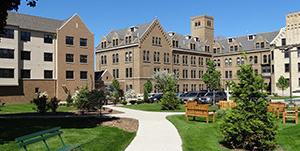

Sudden sensorineural hearing loss, or sudden deafness, is a rapid loss of hearing. It can happen to a person all at once or over a period of up to 3 days. It should be considered a medical emergency. If you or someone you know experiences sudden sensorineural hearing loss, visit a doctor immediately.
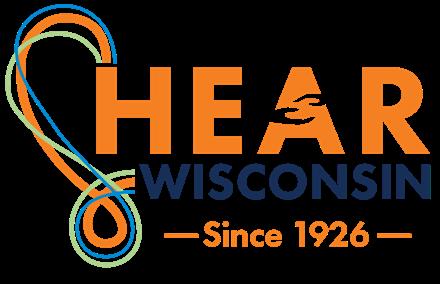

Age-Related Hearing Loss (Presbycusis)



Presbycusis, or age-related hearing loss, comes on gradually as a person gets older. It seems to run in families and may occur because of changes in the inner ear and auditory nerve. Presbycusis may make it hard for a person to tolerate loud sounds or to hear what others are saying.
Age-related hearing loss usually occurs in both ears, affecting them equally. The loss is gradual, so someone with presbycusis may not realize that he or she has lost some of his or her ability to hear.

Ringing in the Ears (Tinnitus)



Tinnitus is also common in older people. It is typically described as ringing in the ears, but it also can sound like roaring, clicking, hissing, or buzzing. It can come and go. It might be heard in one or both ears, and it may be loud or soft. Tinnitus is sometimes the first sign of hearing loss in older adults. Tinnitus can accompany any type of hearing loss and can be a sign of other health problems, such as high blood pressure, allergies, or as a side effect of medications.Nurse giving older woman an ear exam
Tinnitus is a symptom, not a disease. Something as simple as a piece of earwax blocking the ear canal can cause tinnitus, but it can also be the result of a number of health conditions.
40 MHL January 2023 Audiology on wheels? That’s right! HEAR Wisconsin’s new Mobile Audiology Clinic is hitting the road in Wisconsin communities! Learn more at hearwi.org/mac Are you in need of new assistive technology, and want to learn how you can purchase them at a reduced cost with the TEPP Voucher? Visit our state-of-the-art, audiology clinic for a hearing screening and meet with technology experts to determine your product needs. 10243 W. National Avenue, West Allis, WI 53227 | 414-604-2200
Hearing Loss hearing
Age-Related
Memory Whats Normal And Whats Not?
Serious
Many older people worry about their memory and other thinking abilities. For example, they might be concerned about taking longer than before to learn new things, or they might sometimes forget to pay a bill. These changes are usually signs of mild forgetfulness—often a normal part of aging—not serious memory problems.Talk with your doctor to determine if memory and other thinking problems are normal or not, and what is causing them.

Whats Normal and Whats Not?
What’s the difference between normal, age-related forgetfulness and a serious memory problem? Serious memory problems make it hard to do everyday things like driving and shopping. Signs may include:
Asking the same questions over and over again
Getting lost in familiar places Not being able to follow instructions
Becoming confused about time, people, and places
Mild Cognitive Impairment
Some older adults have a condition called mild cognitive impairment, or MCI, in which they have more memory or other thinking problems than other people their age. People with MCI can take care of themselves and do their normal activities. MCI may be an early sign of Alzheimer’s, but not everyone with MCI will develop Alzheimer’s disease.
Age-Related Memory Changes
Forgetfulness can be a normal part of aging. As people get older, changes occur in all parts of the body, including the brain. As a result, some people may notice that it takes longer to learn new things, they don’t remember information as well as they did, or they lose things like their glasses. These usually are signs of mild forgetfulness, not serious
memory problems, like Alzheimer’s disease.
Memory Loss Related to Emotional Problem
Emotional problems, such as stress, anxiety, or depression, can make a person more forgetful and can be mistaken for dementia. For instance, someone who has recently retired or who is coping with the death of a spouse, relative, or friend may feel sad, lonely, worried, or bored. Trying to deal with these life changes leaves some people feeling confused or forgetful.
The confusion and forgetfulness caused by emotions usually are temporary and go away when the feelings fade. Emotional problems can be eased by supportive friends and family, but if these feelings last for more than 2 weeks, it is important to get help from a doctor or counselor. Treatment may include counseling, medication, or both. Being active and learning new skills can also help a person feel better and improve his or her memory. We’ve all forgotten a name, where we put our keys, or if we locked the front door.
It’s normal to forget things once in a while. But serious memory problems make it hard to do everyday things. Forgetting how to make change, use the telephone, or find your way home may be signs of a more serious memory problem.
Forgetfulness: Normal or not? infographic icon. Click through for full text. Read and share this infographic to learn whether forgetfulness is a normal part of aging.
For some older people, memory problems are a sign of mild cognitive impairment, Alzheimer’s disease, or a related dementia. People who are worried about memory problems should see a doctor.
Signs of MCI include:
Losing things often
Forgetting to go to important events or appointments
Having more trouble coming up with desired words than other people of the same age
If you have MCI, visit your doctor every 6 to 12 months to see if you have any changes in memory and other thinking skills over time. There may be things you can do to maintain your memory and mental skills. No medications have been approved to treat MCI.

memory care
memory problems make it hard to do everyday things like driving and shopping.
The “When” of Independent Living
We hear a lot of questions regarding the proper timing for independent living (IL). In other words, how do you know when IL is the right choice for you?
It’s a great question. And, if you are reading this, it means that something is making you think about the option. Here are some of the main reasons our discerning residents chose to make a fresh start with a new place to call home:
Freedom from homeownership and maintenance—no more snow to shovel, grass to mow or repairs to be done. Many find it easier to take long trips knowing their apartment home is taken care of while they are gone.
An active social life—make new friends and choose from a full calendar of fun and excitement.
Safety and security—over time, everyday features of your home, like stairs and tubs, can become safety hazards and obstacles. Senior living (SL) communities are designed to meet the physical needs of seniors and make them safer and easier to navigate.
Onsite amenities—living in the Upper Midwest means snow and winter, which is challenging for everyone. SL communities offer onsite dining options, salons, fit-

ness centers, religious services and more, with no snow travel required.
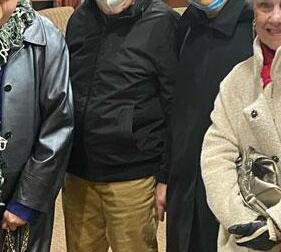

Preparing for the future—when additional services are available, people choose IL with the goal to age in place. They know services are waiting for them when they need it.


Overall, it is about deciding what is right for you. Find a community with the amenities, features and location that offers what will keep you healthy and happy for years to come. Start by talking to a knowledgeable and experienced SL consultant.
Behavioral and Social Aspects of Growing Older











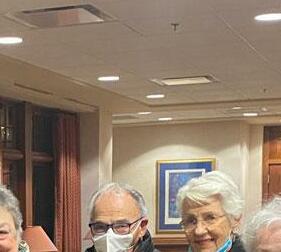

Behavioral and lifestyle factors have a profound impact on health throughout the lifespan. Older adults can help to prevent disease and disability and improve their quality of life through healthy behaviors such as proper nutrition, exercise, use of preventive health care, and avoiding smoking and alcohol abuse. Several particularly encouraging studies have shown that disability rates are declining. NIA research is focusing on ways to sustain and even accelerate the decline in disability, including the use of behavioral interventions and optimizing use of the health care system by older people. In addition, important research efforts, such as the national Health and Retirement Study, continue to collect and analyze demographic data that inform public policy and planning for the he
Potential Impact of Attitudes on Health and Behavior
Emotional state has been associated with health and functional status in old age. Both positive and negative attitudes or emotions can influence health and physical and cognitive function.
Emotional Vitality Protects Against Mortality and Progression of Disability in Disabled Older Women. Using data from the Women’s Health and Aging Study, a longitudinal study of community-dwelling disabled women aged 65 years and older, researchers examined whether emotional vitality protects against progression of disability and mortality. At the start of this study, a substantial proportion of even the most disabled older women were identified as emotionally vital. Three years later, results showed that these upbeat, positive women did better than women who were not emotionally vital in maintaining physical function over time. These results suggest that helping older people maintain a high level of emotional vitality might play an important role in slowing or preventing a downward spiral in health status. Further study may be warranted of why and when positive emotions protect against health decline in older people.
For seniors who are tired of maintaining their own home or looking to down-size, independent senior housing is ideal. Those looking to move into an independent senior living community have two choices. One is to purchase a senior condominium and the second is to rent a senior living apartment. Both provide independent, active seniors with the freedom they enjoy, but without all of the burdens of home ownership like mowing the lawn, shoveling the snow, or making home repairs.

42 MHL January 2023 262-478-1500 TEROVASENIORLIVING COM ORLIVING 262-478-1500 TEROVASENIORLIVING COM ORLIVING
When independent living is the right choice for you
independent living
The health benefits of journaling include reduced anxiety and processing your emotions in a positive way.
Since November is National “Write Your Life” month, what better way to celebrate than starting a new healthy habit? Journaling can have many positive impacts on your health; in fact, journaling is shown to help reduce anxiety and help improve mental health. If you’re looking for a relaxing activity that can also help improve your health, check out this list of five health benefits of journaling!
Reduced anxiety
Everyone experiences anxiety on occasion. Perhaps you’ve been feeling a bit overwhelmed by a busy schedule or anxious about a health issue. Journaling these feelings can be a therapeutic process that allows you to reduce the anxiety you feel! By writing down what you’re feeling, you can better process these emotions and find
yourself feeling more relaxed and able to take on the challenges.

In fact, one study showed that people who journal or write about their feelings a few times per week had a decrease in negative thoughts and increased feelings of well-being. This is a fantastic finding that shows the power of writing down your thoughts!

Helping to process emotions

When you’re able to write out your feelings in a safe place, you can better process your emotions. By writing down what you’re feeling, it can provide some clarity on your emotions and leave you feeling more in control of your thoughts and feelings. When you feel balanced and aware of your emotional state, your mental health can improve – this is one of the key health benefits of journaling. Sometimes just knowing or acknowledging what you’re feeling is half the battle!

Improved problem-solving and problem prioritization

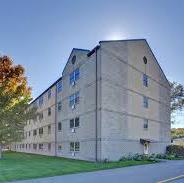
Have you ever felt like a large problem is looming over your head, throwing a shadow over your daily activities? Sometimes, when you have a specific event or issue that worries you, it can feel like it actively negatively impacts your mental health. By journaling out this problem, you can help ease some of that worry and boost your mental health. When you write about a problem, your brain can often look at it objectively. Instead of letting negative thoughts take over, you can assess the problem in a more compassionate way with yourself and allow your emotions and feelings out in a positive manner.
Provides a mental “check-in”
By writing down your thoughts and feelings, you can get a sense of where your emotions are and even track changes or patterns in your emotional behavior. When you can see and track patterns, you can influence your mental health in a positive way! It’s also nice to have a few minutes to yourself when you can write out your mental state; by setting aside time to check in with yourself, you can give yourself the opportunity to assess your mental health and take the necessary steps to maintain a positive outlook.
Allows for insights and self-reflection

Much like the above tip, another health benefit of journaling is self-reflection. When you set aside some time (be it a few minutes per day or 30 minutes once a week), you’re evaluating your emotions, your feelings, perhaps goals you may have, problems you’re solving, or your overall mental health. This time is important as many of us can often get busy and forget to have these essential checks with ourselves. By journaling out these reflections, you can see what is helping to maintain or improve your mental health and what might not be having so much of an impact.
For more information visit captel.com.


January 2023 MHL 43
senior independence 5 Health Benefits of Journaling Put pen to paper and enjoy these health benefits!
QUALITY SUBSIDIZED SENIOR HOUSING

Convenient Downtown Location
Free Parking- secure Entr y System
Beauty Salon-Community Room
Social Activities
By Gord Kerr Medically Reviewed by Jill Corleone, RDN, LD

Nobody is immune to the occasional pimple
A deficiency in vitamin D may contribute to skin conditions, such as acne and dermatitis, and delayed healing of wounds.
Vitamin D is vital to the health, beauty and longevity of the largest organ in your body: your skin. An adequate level of vitamin D benefits skin by helping to promote healthy epidermal cell growth, decrease the risk of infection, prevent skin aging and reduce the incidence of chronic disease, including skin cancer.
Why You Need Vitamin D
Vitamin D provides a wide range of functions essential for a healthy body and skin. Your skin relies on vitamin D for its anti-inflammatory properties needed to help eliminate bacteria or pathogens that permeate your epidermis.
In addition to being vital for your bones, vitamin D positively influences the health of your skin by its role in the regulation of hormones, synthesis of connective tissue and support of your immune system to neutralize free radicals that contribute to harmful skin conditions.
How Much You Need
Nearly, 30 to 50 percent of all age groups are vitamin D deficient worldwide. It’s crucial to get the right amount of vitamin D by way of adequate sun exposure, foods rich in vitamin D, fortified foods or supplements.

The recommended daily intakes for vitamin D vary among some organizations in the U.S.:
The Food and Nutrition Board recommends 600 IU for children and adults and 800 IU for seniors.
The Endocrine Society recommends 600 to 1,000 IU for children and 1,500 to 2,000 IU for adults.

The Vitamin D Council recommends 1,000 IU per 25 pounds of body weight for children and 5,000 IU for adults.
Vitamin D is known as the sunshine vitamin because your body can produce it when exposed to sun. The sun is the most abundant source of vitamin D for most people.
The effect of sun exposure on vitamin D synthesis depends on many factors, such as your skin pigmentation, body size, age and environmental factors, such as geographic latitude, season, time of day, weather conditions, amount of air pollution and surface reflection, which can all interfere with the amount of UVB radiation reaching the skin
To avoid vitamin D deficiency skin symptoms, you can get adequate amounts from the sun in as little as 15 minutes if you are very fair skinned or several hours or more for a dark skinned person. The Vitamin D Council says your body can produce 10,000 to 25,000 IU of vitamin D in about half the time it takes for your skin to begin to burn.
Although some natural foods contain vitamin D in small amounts, many countries fortify foods with vitamin D to make it easier to get sufficient amounts needed for good health. Some foods and fortified foods that contain vitamin D include:
Fatty fish
Egg yolks
Beef liver
Fortified milk, yogurt and orange juice
Fortified cereal and health bars
Infant formula
Vitamin D is also available in supplement form, and included in many multivitamins. When choosing a supplement, consider vitamin D3 as it is metabolized better than other forms of vitamin D, according to the National Institutes of Health. With a severe deficiency, you may need vitamin D by injection from your doctor.
When You Need a Supplement
Many conditions or situations can make it difficult to get enough vitamin D and put you at risk of a deficiency. Some of these include:
Having a limited exposure to the sun from living in the northern hemisphere; wearing clothing that extensively covers your body due to cultural reasons; or spending your day indoors
Being elderly with decreased ability to absorb nutrients

Being pregnant and breastfeeding
Some gastrointestinal diseases or conditions that impair the body’s ability to absorb vitamin D foods such as gastric bypass surgery, Crohn’s or celiac
Kidney or liver disease that inhibits the organ’s ability to metabolize vitamin D in your body
Low dietary intake of foods rich in vitamin D or living without access to fortified foods
Obesity or a fat malabsorption issue
Taking medications that impair vitamin D and calcium absorption
Having dark-pigmented skin, which decreases the ability to synthesize vitamin D from the sun

44 MHL January 2023
skin<<page 0� skin>>page 4�
If you think you may have vitamin D deficiency, you should consult your doctor or have a blood test done to check your vitamin D levels.
Eczema is a chronic inflammatory skin rash with symptoms of red, dry, rough and itchy skin. Eczema affects about 10 to 30 percent of all Americans, most commonly infants and young children, but it also develops in adults.
One of the best ways vitamin D benefits skin is with its ability to treat eczema. Treatment for a deficiency in vitamin D has proven to be effective for this type of skin irritation. The dose is usually between 5,000 and 15,000 IU, since people differ in their blood level after supplementation. It often takes two to three months to respond, according to the Vitamin D Council.
Vitamin D and Atopic Dermatitis
A meta-analysis in 2016, published in Nutrition, analysed evidence to support the effectiveness of vitamin D in treating atopic dermatitis. The study concluded, with a 95 percent confidence interval, that vitamin D supplementation has a significant role in decreasing the severity of dermatitis and can be considered a safe and tolerable therapy.
Children respond well to vitamin D, sometimes quicker than adults. With 25 micrograms given daily (1,000 IU) to children, atopic dermatitis improved within a month, as shown in a study published in the Journal of Allergy and Clinical Immunology in 2014.
Vitamin D and Acne
Low vitamin D skin symptoms may include a breakout of acne. Acne is an inflammatory condition that may lead to blocked or clogged pores that cause red bumps or blackheads to form on your skin. Changes in hormone levels and bacteria can contribute to acne.
A study evaluated vitamin D levels in patients with acne and identified the role of vitamin D deficiency in acne development. Findings published in PLoS One in 2016 noted that 48.8 percent of patients with acne had vitamin D deficiencies. After supplementing these patients with 1,000 IU of vitamin D, their inflammatory lesions showed improvements after eight weeks.
Another study published in Dermato Endocrinology in 2014 also found a connection between vitamin D deficiency and acne. Results indicated that vitamin D regulates the immune system and the production of keratin and sebum from the sebaceous glands. Furthermore, research suggests that vitamin D benefits the skin with its antioxidant properties that may inhibit the blocking of pores in the skin.
Vitamin D and Wound Healing

If you are deficient, you may experience low vitamin D skin symptoms, including slow healing of cuts, bruises or wounds.


A study by the International Society for Burn Injuries in 2016 found that the sunshine vitamin D might increase production of antimicrobial protein necessary for the process of forming new skin. The rate of cell renewal is dependent on the amount of vitamin D present in the body. Findings support the potential of vitamin D to control
course of treatment. Lupus can be a frustrating, debilitating disease, but it is also often one that can be managed. It is not progressive (meaning that it does not get worse over time), and more lupus-specific treatments are being developed and approved than ever before.

One of the biggest lessons people learn as they fight their lupus is to be their own advocate. Only they are in their bodies 24/7; they know their disease, their limits, and how strong and resilient they really are. They seek support from friends, family, and caregivers. They join support groups to learn more about their lupus and connect with others fighting their own battles. They volunteer and raise funds for organizations like the Lupus Foundation of America, Wisconsin Chapter, which aims to improve the lives of all people with lupus through programs of research, education, support, and advocacy. And, significantly, they spread lupus awareness by sharing their stories. In general, the more people who know about lupus, the more urgency and advocacy will lead us to better treatments and ultimately a cure; specifically, the more individuals who know about lupus, the more likely they will be to notice symptoms in themselves or others, which can lead to faster diagnosis and earlier treatments.
There is a saying that “someone you know has lupus.” With nearly 30,000 people in Wisconsin alone suffering from it, and 5 million worldwide, that saying has never been more true. For more information about lupus, visit www.lupuswi.org. To do your part to raise awareness, email angie@lupuswi.org with the word “bracelet” in the subject line and your address, and LFA, WI Chapter will send you a free lupus awareness bracelet. If you’d like an informational packet with practicing local rheumatologists, Chapter information and other resources, let us know in the email and we’ll send that out with your bracelet. We envision a world without lupus; help us by joining the fight to raise awareness of this cruel, mysterious disease.
January 2023 MHL 4�
skin<<page 44
lupus<<page
1�




Mark Your Calendar!
OmniHeart Diet
The OmniHeart Diet was developed to take the DASH Diet a step further by replacing some of its carbohydrates with unsaturated fat or protein. Research published in the Journal of the American Medical Association in 2005 found that the high-protein diet and the high-unsaturated fat diet both delivered even greater health benefits than the high-carbohydrate DASH-like diet did; these diets improved blood pressure and cholesterol levels even more. Peanuts are the perfect food to include in these diets, since they are high in both protein and unsaturated fats!
“SPRING INTO WELLNESS” HEALTH FAIR
Come to Milwaukee Catholic Home for our annual “Spring into Wellness” Health Fair on Thursday, March 16th from 10 am - 3 pm at 2462 N. Prospect Avenue. The event includes free health screenings such as blood pressure checks, diabetes testing, cholesterol pre-screenings, and eye exams, as well as massages, reiki, door and raffle prizes, goodie bags, and more! Contact Linda Cardinale at 414.220.3216 or lcardinale@milwaukeecatholichome.org to learn more.

Mediterranean Diet
A “Mediterranean-style” diet includes an abundance of fruits, vegetables, nuts and legumes, and whole grains; some dairy products, fish and poultry; and very small amounts of meats. The main source of fat, which constitutes 35-40% of calories, is monounsaturated fat from olive oil and nuts and omega-3 fat from fish.
MIND Diet
The MIND diet (or Mediterranean-DASH diet Intervention for Neurological Delay) combines components from two existing diets that are recommended for overall health: the Mediterranean and DASH diets. The MIND approach incorporates foods from each that have been shown to be particularly beneficial for the brain. And the best part? Peanuts and peanut butter are a part of all three! With a wealth of antioxidants, vitamins, minerals, unsaturated fats and polyphenols, peanuts aren’t just brain food—they’re brain superfood!
So it’s no surprise that when the MIND diet was created to bring together the most brain-boosting foods, peanuts and peanut butter were on the list. Many studies have been conducted that prove the benefits of the MIND Diet.
In 2015, 460 MIND diet participants were followed over the course of 4.7 years. Researchers observed that a higher adherence to the MIND diet “substantially slows cognitive decline with age.” A study on the relationship between MIND diet adherence and Alzheimer’s Disease examined a total of 923 participants, ages 59-98, for an avg. of 4.5 years. They found high adherence reduced risk of Alzheimer’s by 53%, and a significant reduction with even mild adherence. In 2018, researchers examined how following the MIND diet could impact rates of Parkinson’s disease and its progression. In that study, they found that closely following the MIND diet was associated with a decreased risk of Parkinson’s Disease, as well as a slower rate of progression.
Peanut Butter Diet
SENIOR<<page 30


Assisted Living
A study in the American Journal of Clinical Nutrition shows that replacing saturated fat with good monounsaturated fat (MUFA) instead of carbohydrate lowers levels of total and LDL cholesterol as effectively as a low-fat diet, with the additional benefits of lowering triglyceride levels and maintaining high HDL levels in the blood (Kris-Etherton, PM et al). High-monounsaturated fatty acid diets lower both plasma cholesterol and triacylglycerol concentrations (AJCN 1999; 70:1009-15.v). This study is important because it shows that other food sources rich in MUFAs, specifically peanuts, peanut butter and peanut oil, can be used in designing heart-healthy, higher MUFA diets. By following higher MUFA diets, subjects saw heart-healthy results in just four weeks. During the course of this controlled study, subjects made small changes in their diets. They used peanut butter instead of butter on bagels, toast, and waffles, and snacked on peanuts instead of chips, crisps or pretzels.
Assisted living provides a great alternative for seniors who need some additional help with medication, grooming, dressing, eating, etc. Assisted living has two options including; Residential Care Apartment Communities (RCAC), which allows seniors to live in their own apartment, but only offers 28 hours of care, and CommunityBased Residential Care Facility or CBRF. This type of community is an ideal living option for seniors who need more assistance that what can be provided by an RCAC, offering care 24 hours a day, seven days a week. Assisted living communities tend to offer more of a residential, home-like environment, as well as provide meals, social activities, housekeeping and transportation.
Diabetic Diet

With diabetic diets, it is important that carbohydrates, fat and protein are balanced to ensure blood sugar levels stay as stable as possible. On a 100-point scale, peanuts have a low glycemic index (GI) of 14 and a glycemic load (GL) of 1. Glycemic load factors in the amount of carbohydrate in a standard serving and research shows that foods with a low GI and GL may help keep blood sugar and insulin levels in optimal ranges.

Specialized Care Community



There are some CBRFs that specialize in caring for one kind of illness. One of the most common is an Alzheimer’s or memory impairment care community. In specialized assisted living communities, the environment, staff and programming is specifically designed to meet the unique needs of those individuals who are living there. Like a non-specialized assisted living community, a specialized care community also provides 24/7 care, social programming, meals, housekeeping and transportation are generally provided.
Plant-based (Vegetarian) Eating
There are many health benefits associated with following a vegetarian diet. Compared to non-vegetarians, studies show vegetarians have lower mortality rates and a reduced risk of developing coronary heart disease, hypertension that can lead to stroke, non-insulin dependent diabetes, obesity, and some cancers. There is no single vegetarian cuisine or eating pattern. The bulk of calories for vegetarian diets usually comes from fruits, vegetables, legumes, grains, nuts and seeds. Eggs and dairy products may or may not be included. Because of their unique composition, peanuts can provide a number of nutritional benefits for vegetarian diets, including valuable plant protein, fiber, and vitamins and minerals.
Nursing Home
This is probably the most commonly known, but often confused type of senior living option. It’s also one of the only options that used to be available to seniors. Nursing homes provide 24-hour skilled nursing services for seniors who need rehabilitation after a surgery, or require care for issues like feeding tubes. The levels of hospitality services in nursing homes vary greatly depending on their targeted clientele.
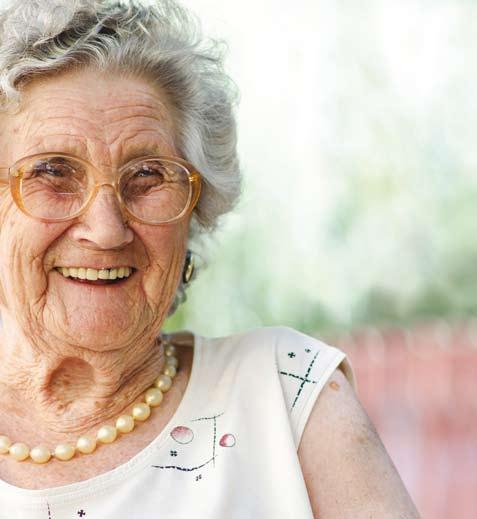
Whether you’re looking to down-size your home or a community to meet the needs of an aging parent, there is a senior living community to meet your needs. Being prepared and understanding the options available will help you to choose what type of senior living community is best for you or your loved one.



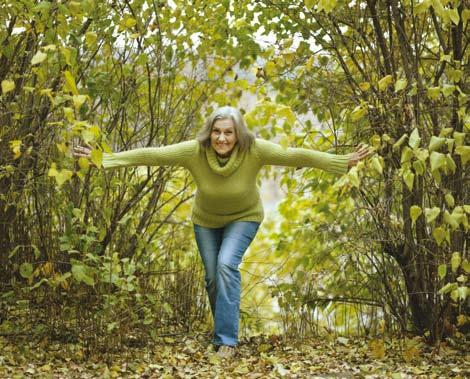






migraine<<page �





1. https://doi.org/10.1186/s10194-020-01208-0 2. https://pubmed.ncbi.nlm.nih.gov/28017235/ 3. https://www.niehs.nih.gov/research/programs/endocrine/index.cfm 4. https://www.nature.com/articles/s41598-019-44097-3 5. https://www.nature.com/articles/7500165

Byline: Jan Rupnick is the director of public relations for CRL Senior Living Communities. CRL owns and operates state-of-the-art senior care residences that deliver the highest quality, cutting-edge level of care in specially designed therapeutic environments. The company meets the needs of seniors with independent living, assisted living and Alzheimer’s/dementia care communities.

MARCH 2017 MHL 31
See what’s new at St. Anne’s. St. Anne’s Salvatorian Campus 3800 N. 92nd Street, Milwaukee 53222 www.stannessc.org
Take a tour of our innovative enhanced assisted living facilities or visit our renovated chapel. Call 414-463-7570. Caring for people since 1876. 140 years old and still turning heads.
January 2023 MHL 4�
lifestyle<<page 1�
































 By Sarah Arndt
By Sarah Arndt



















































 By Kalpana (Rose) M. Kumar, M.D.
By Kalpana (Rose) M. Kumar, M.D.



















































































































































